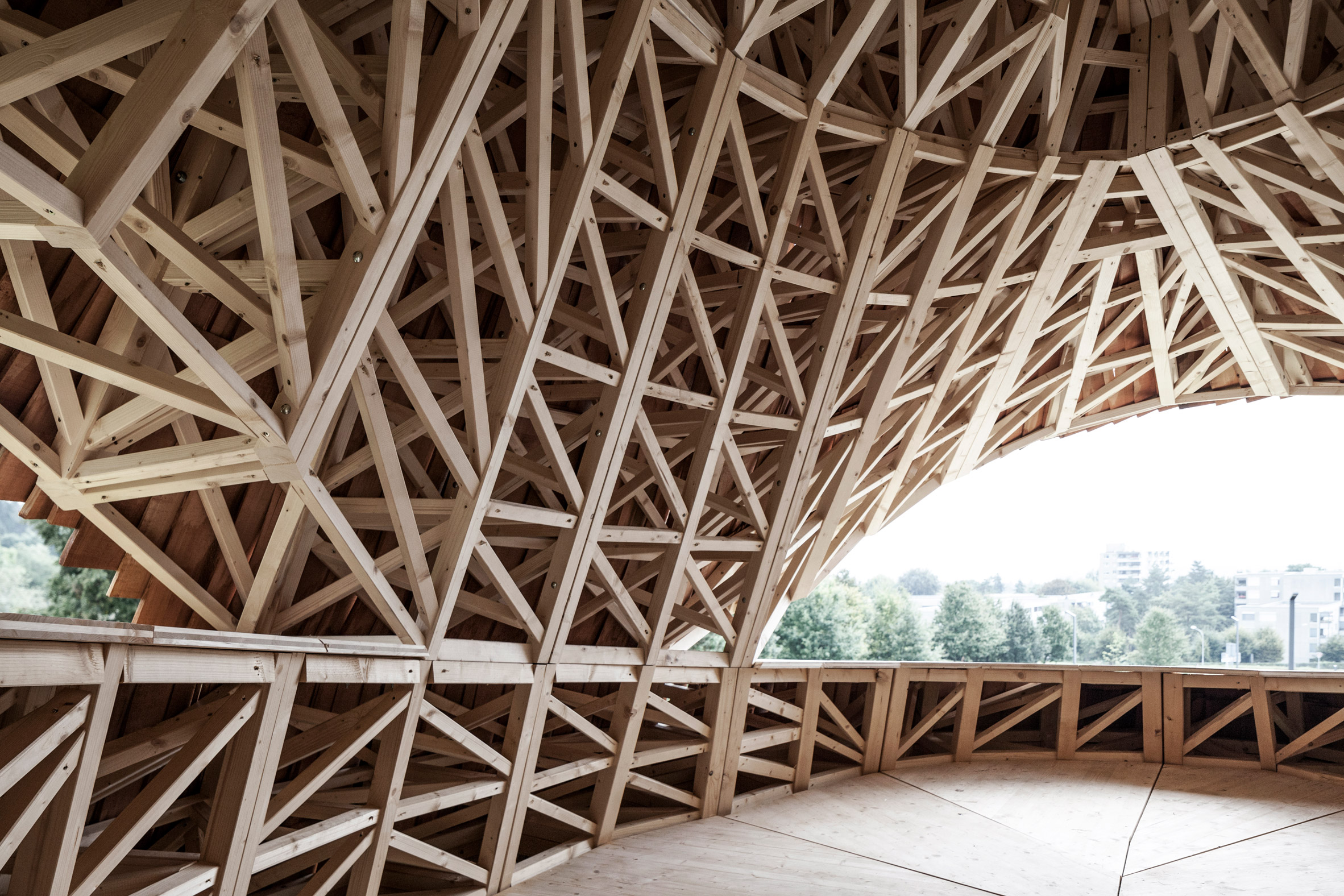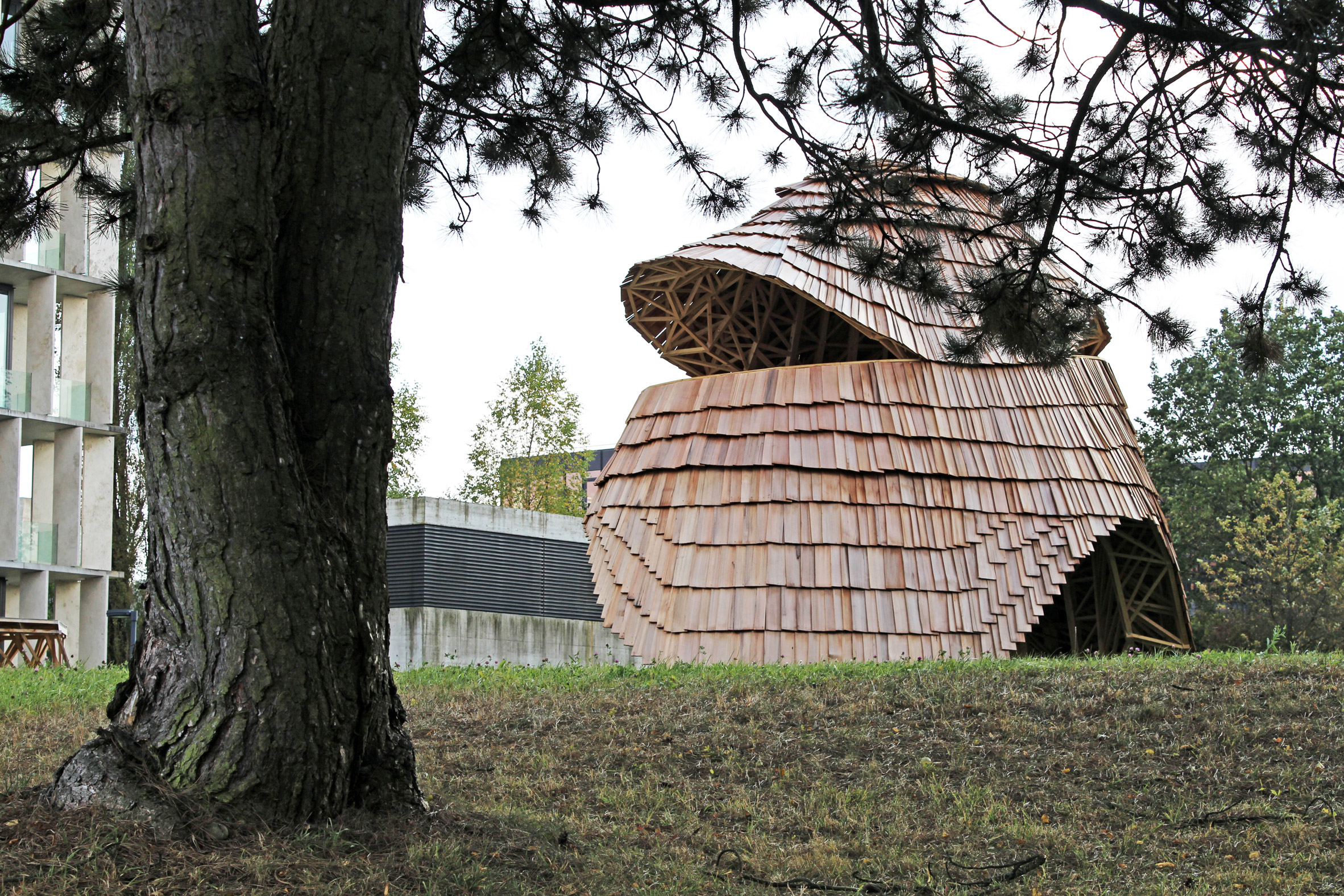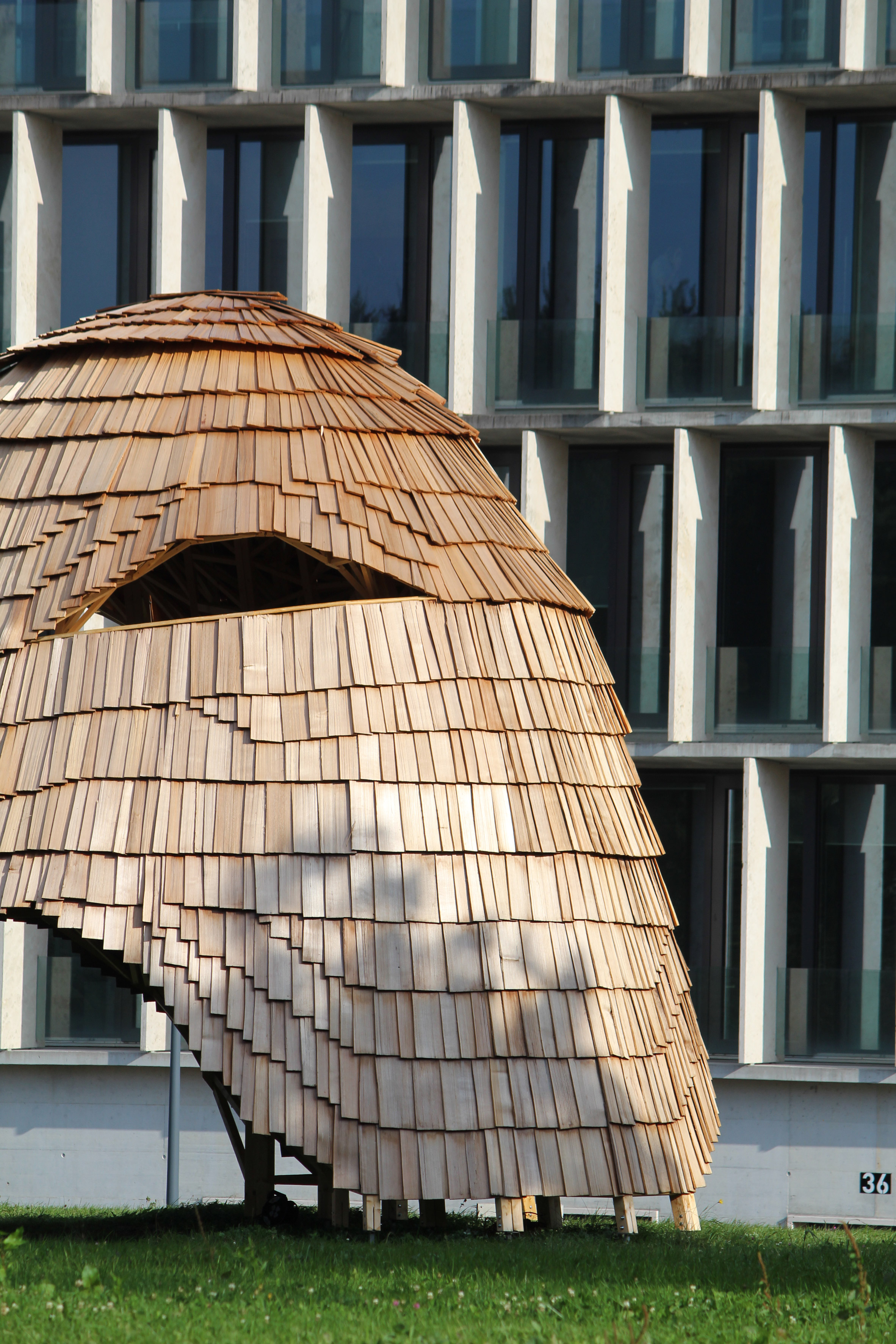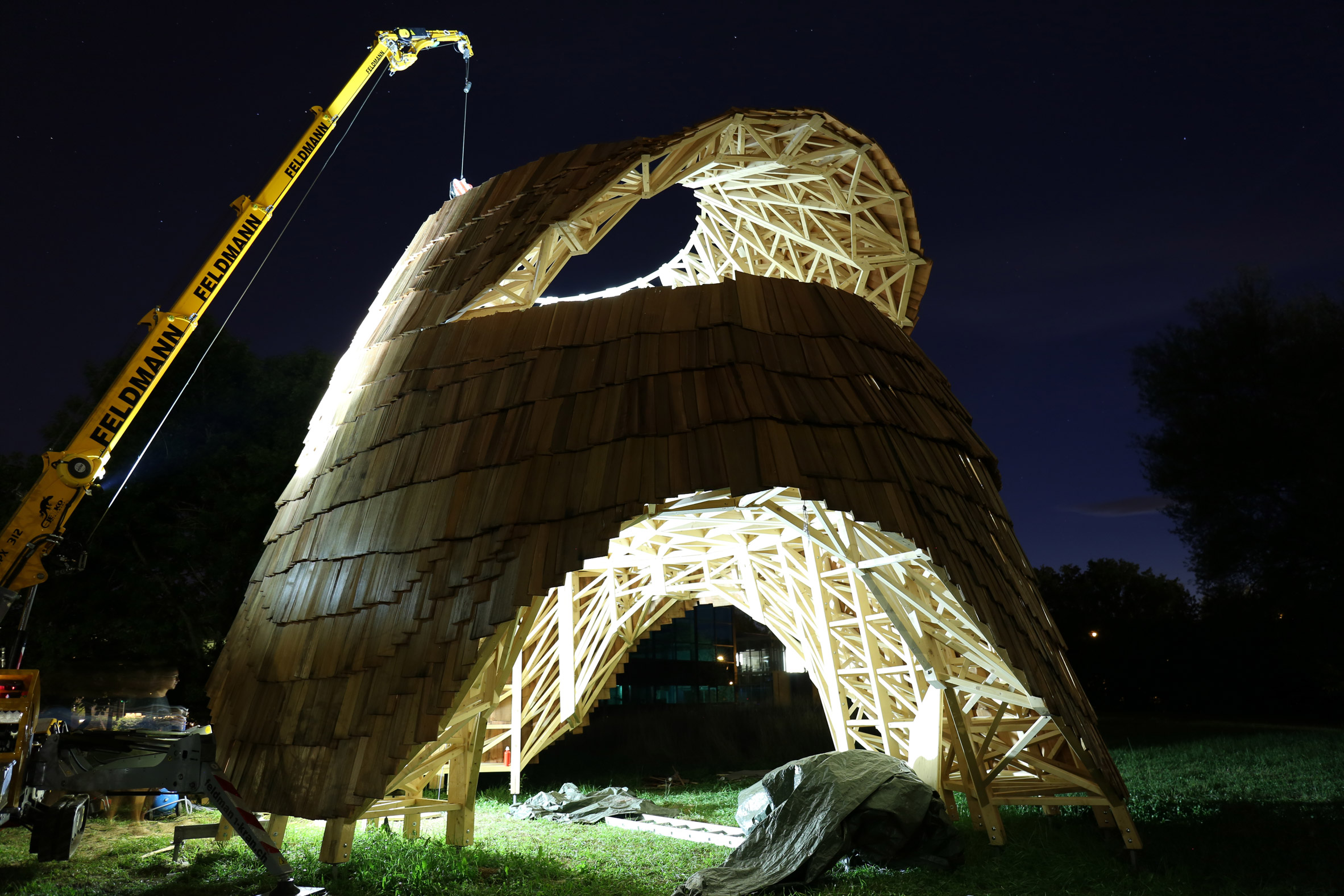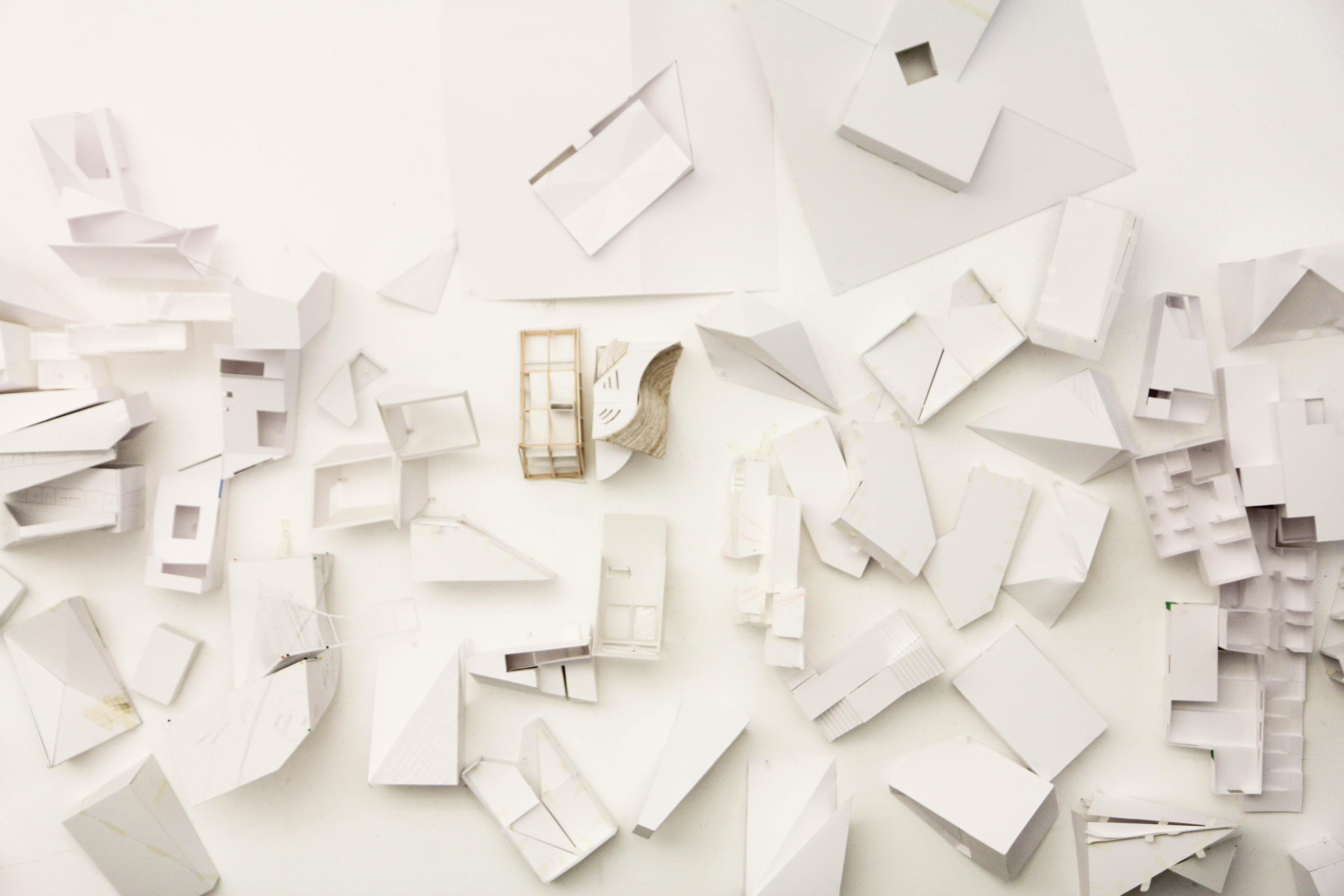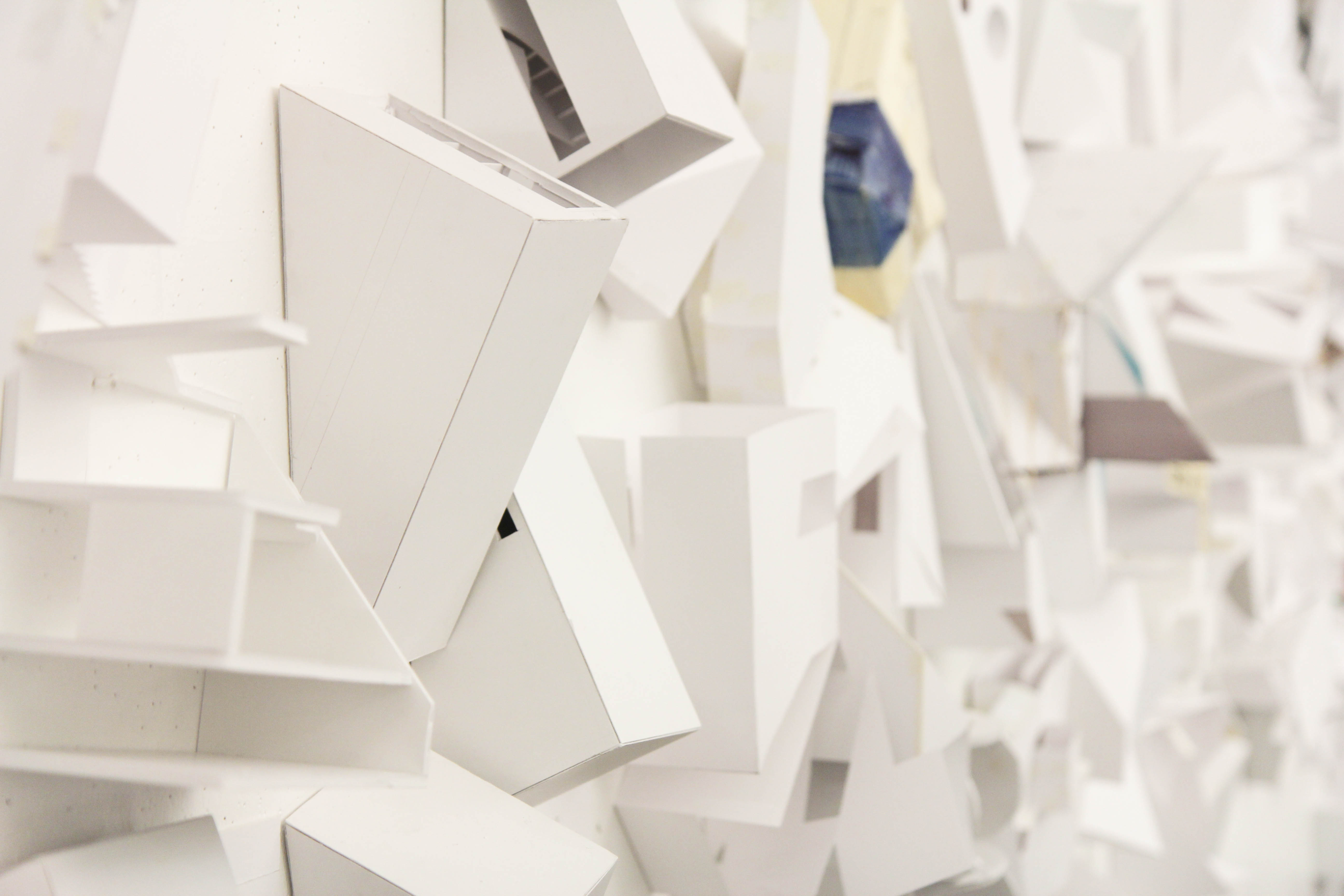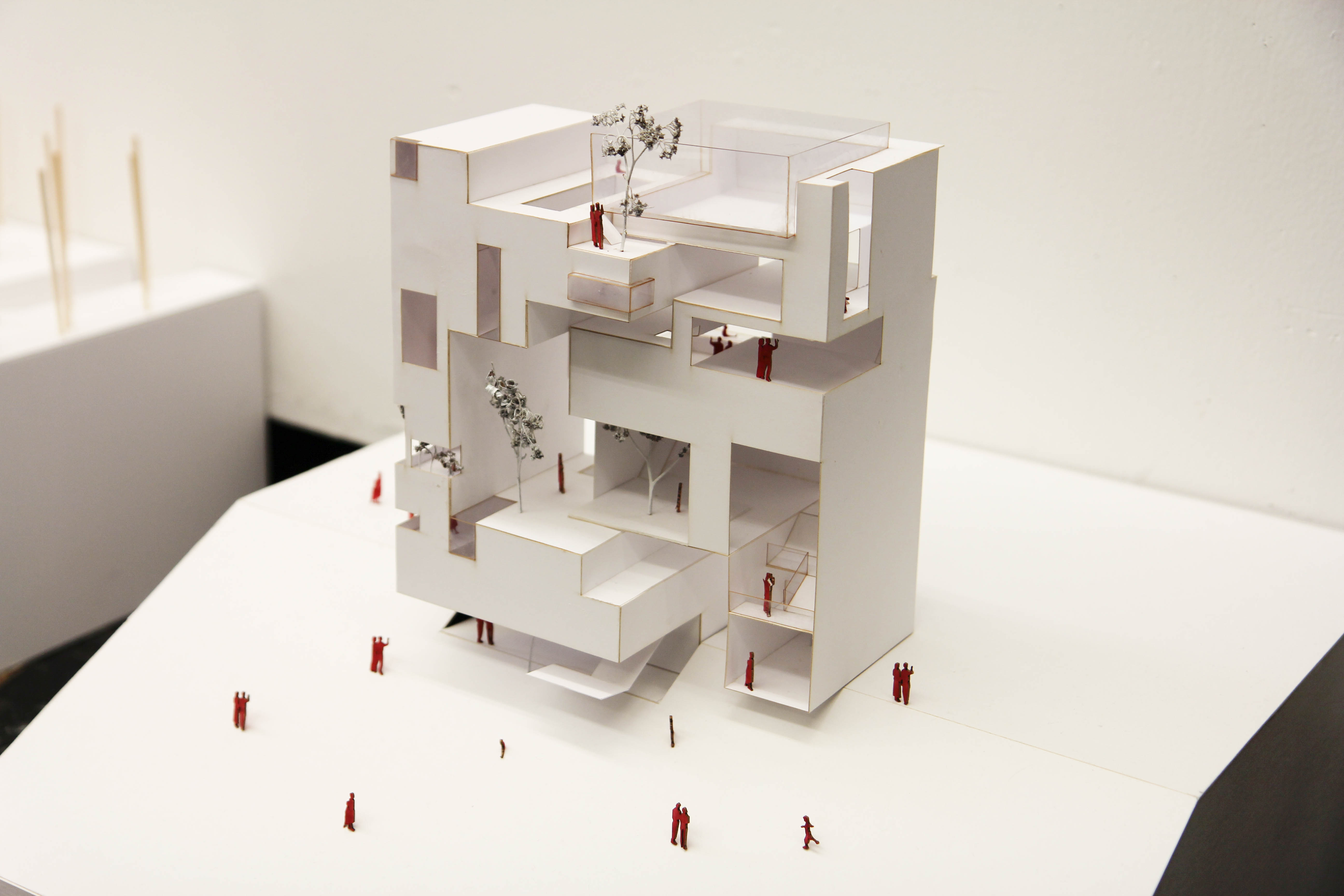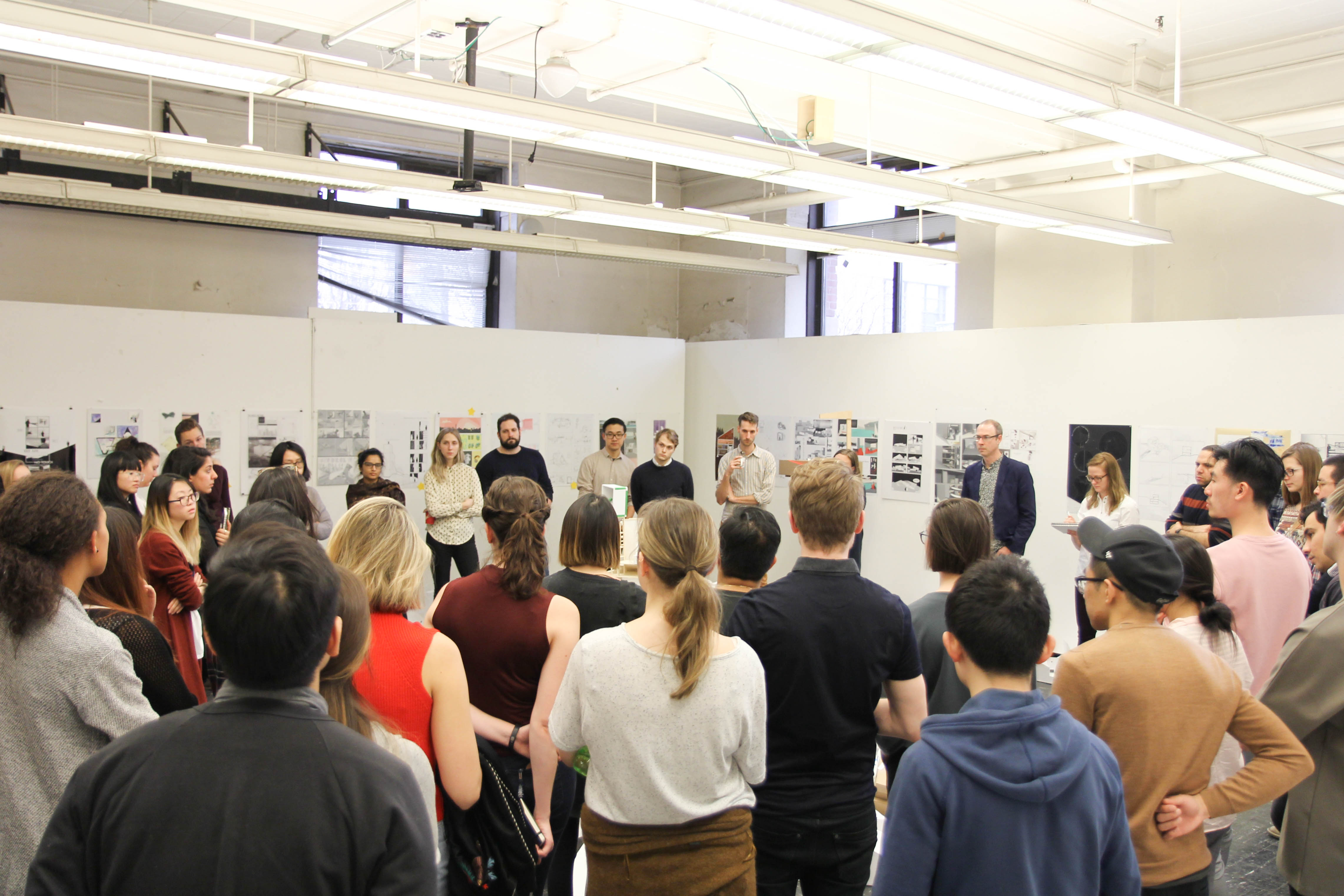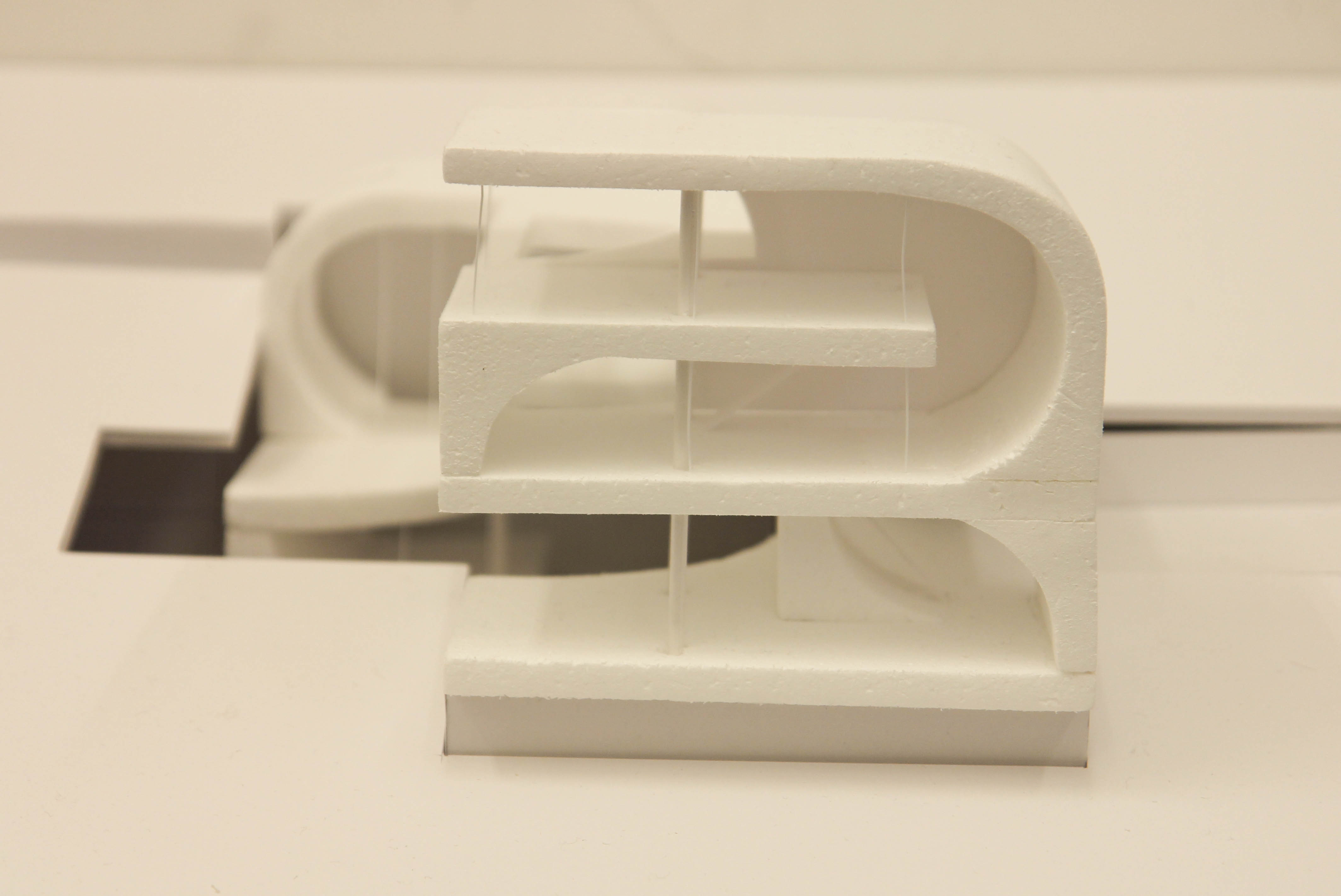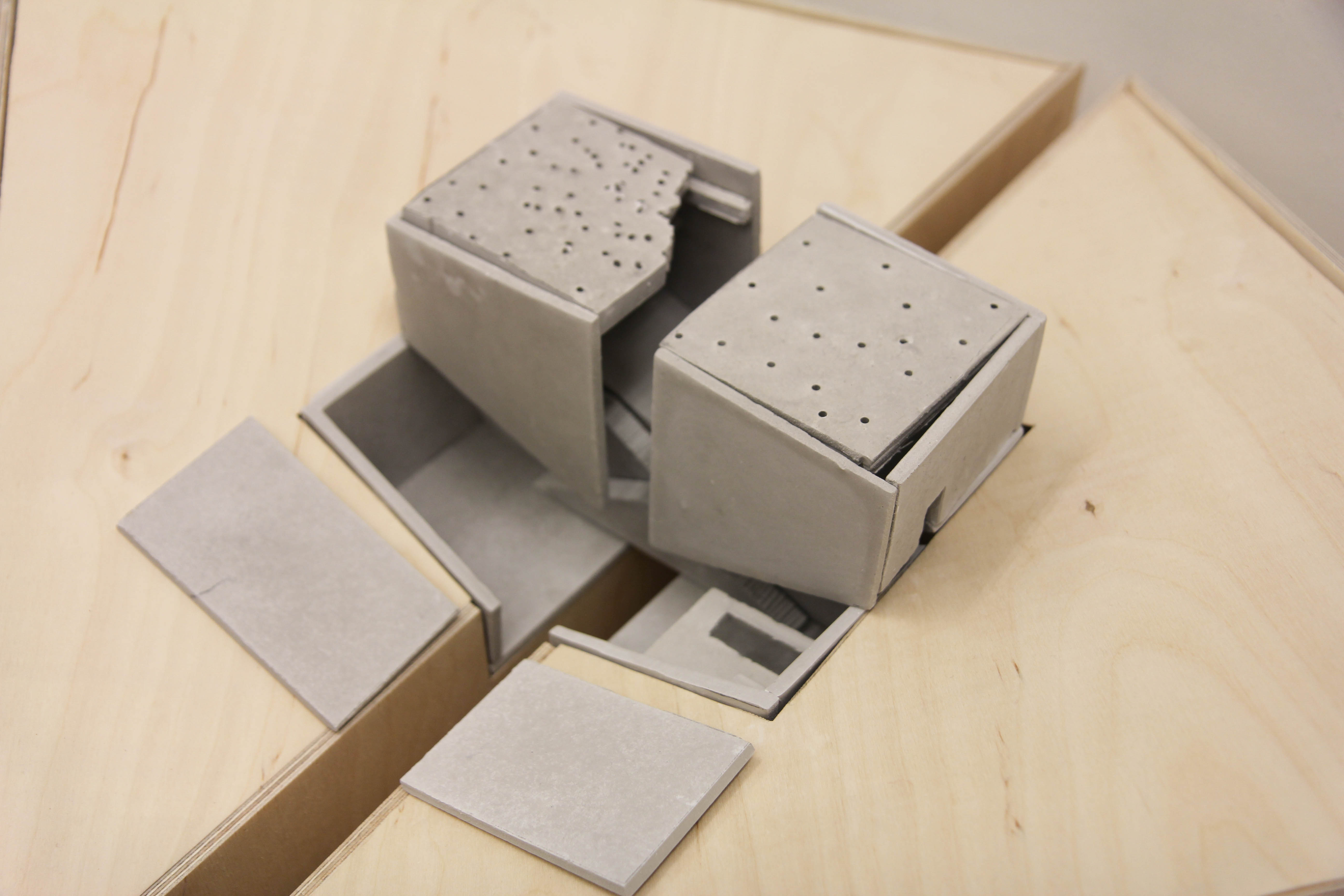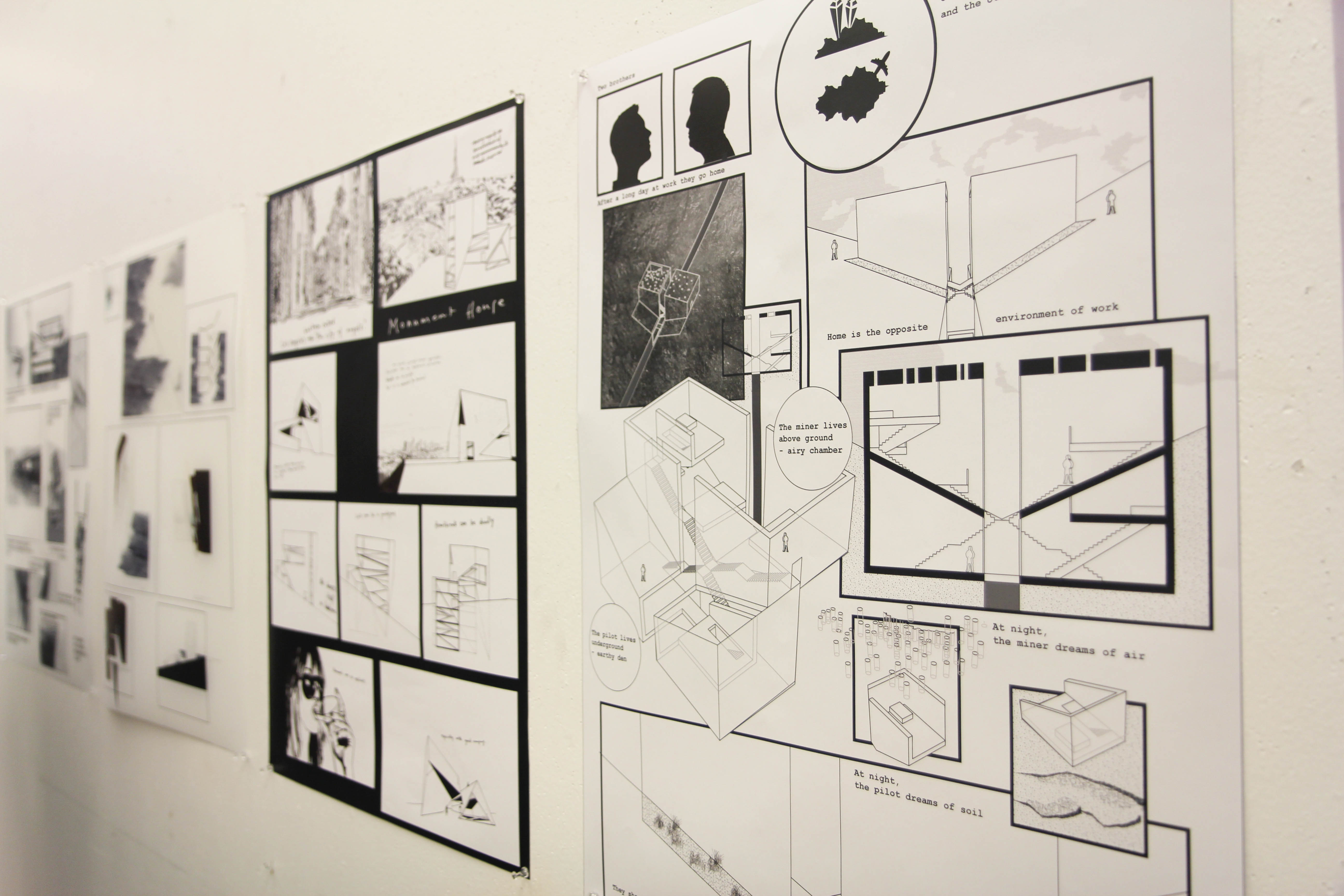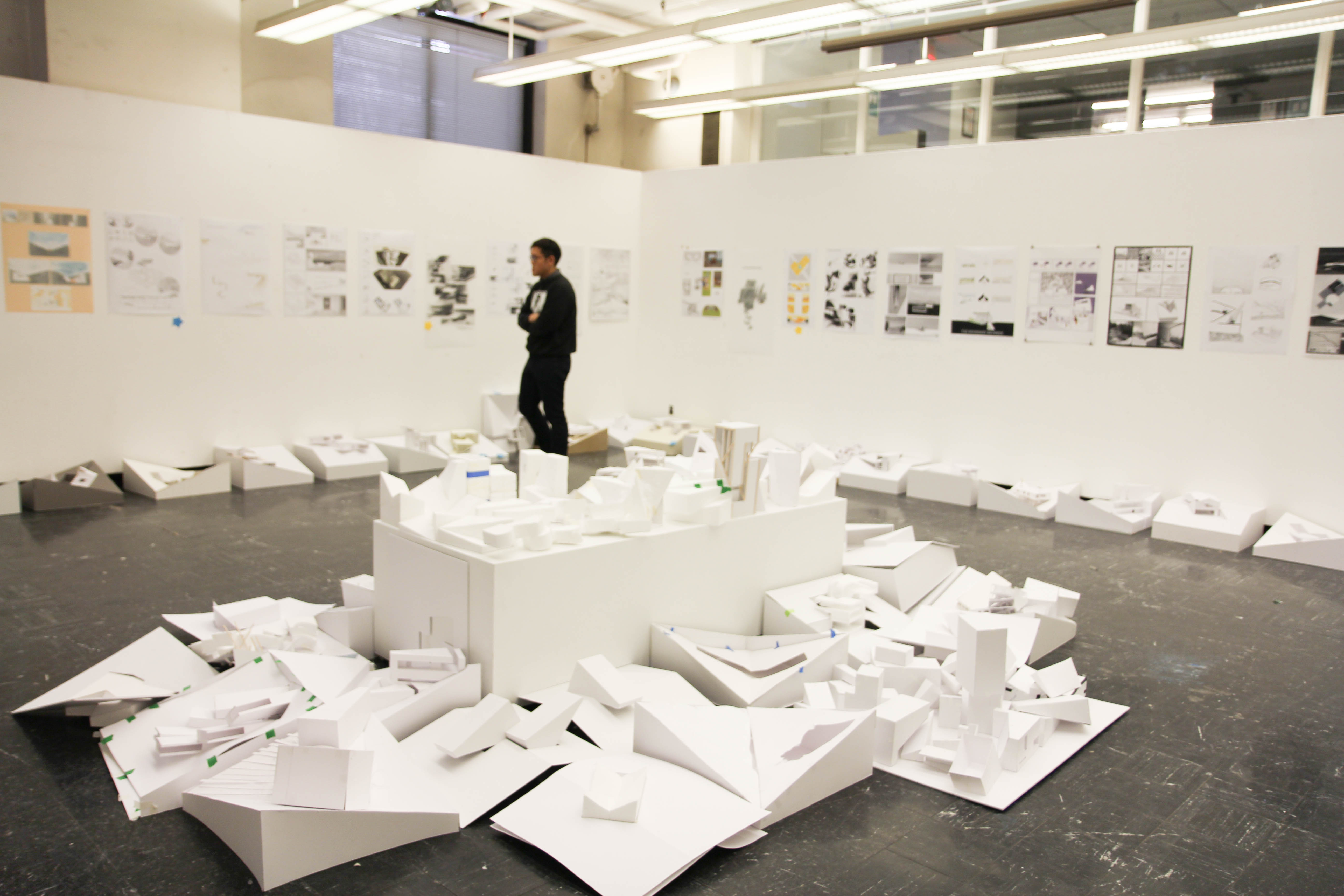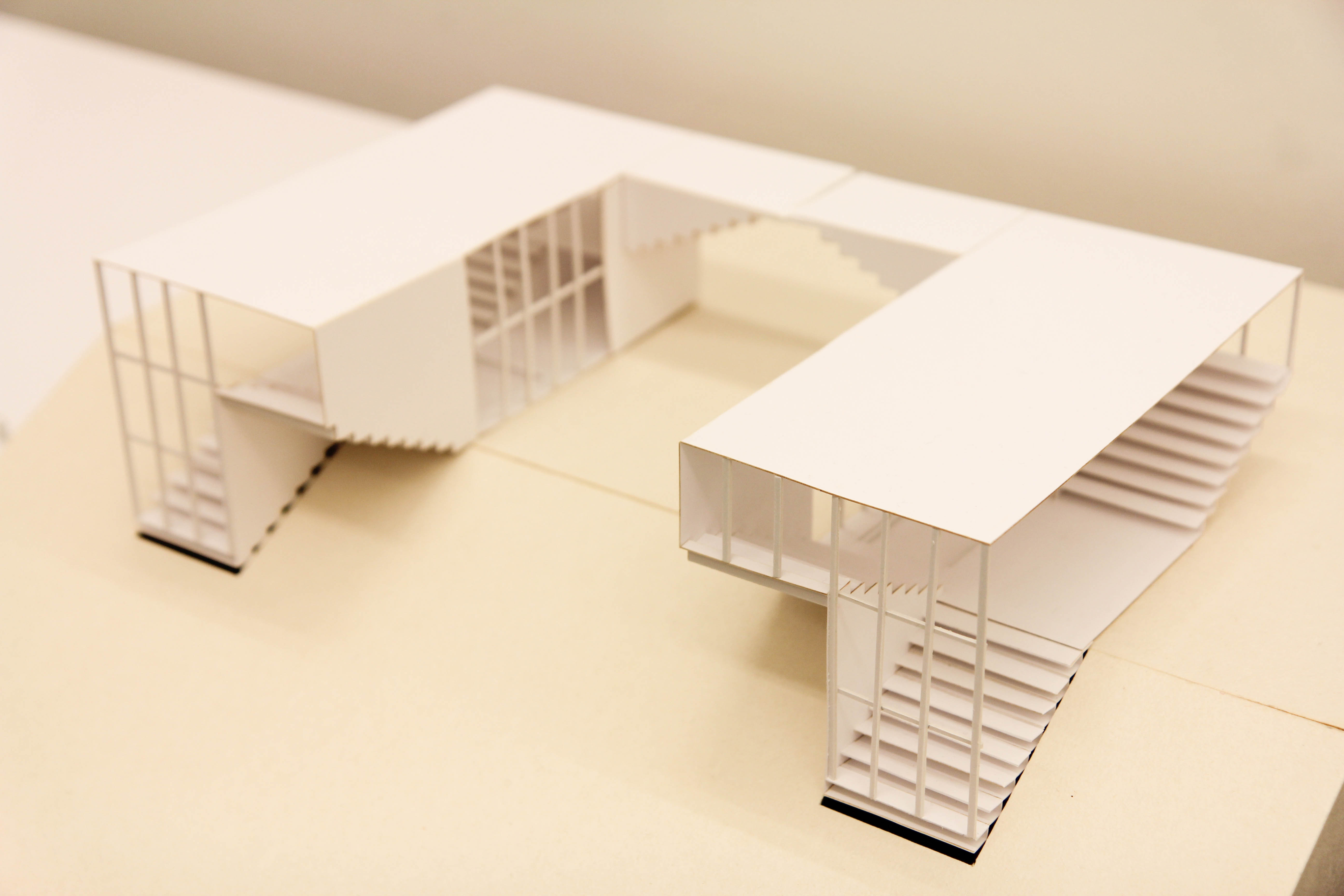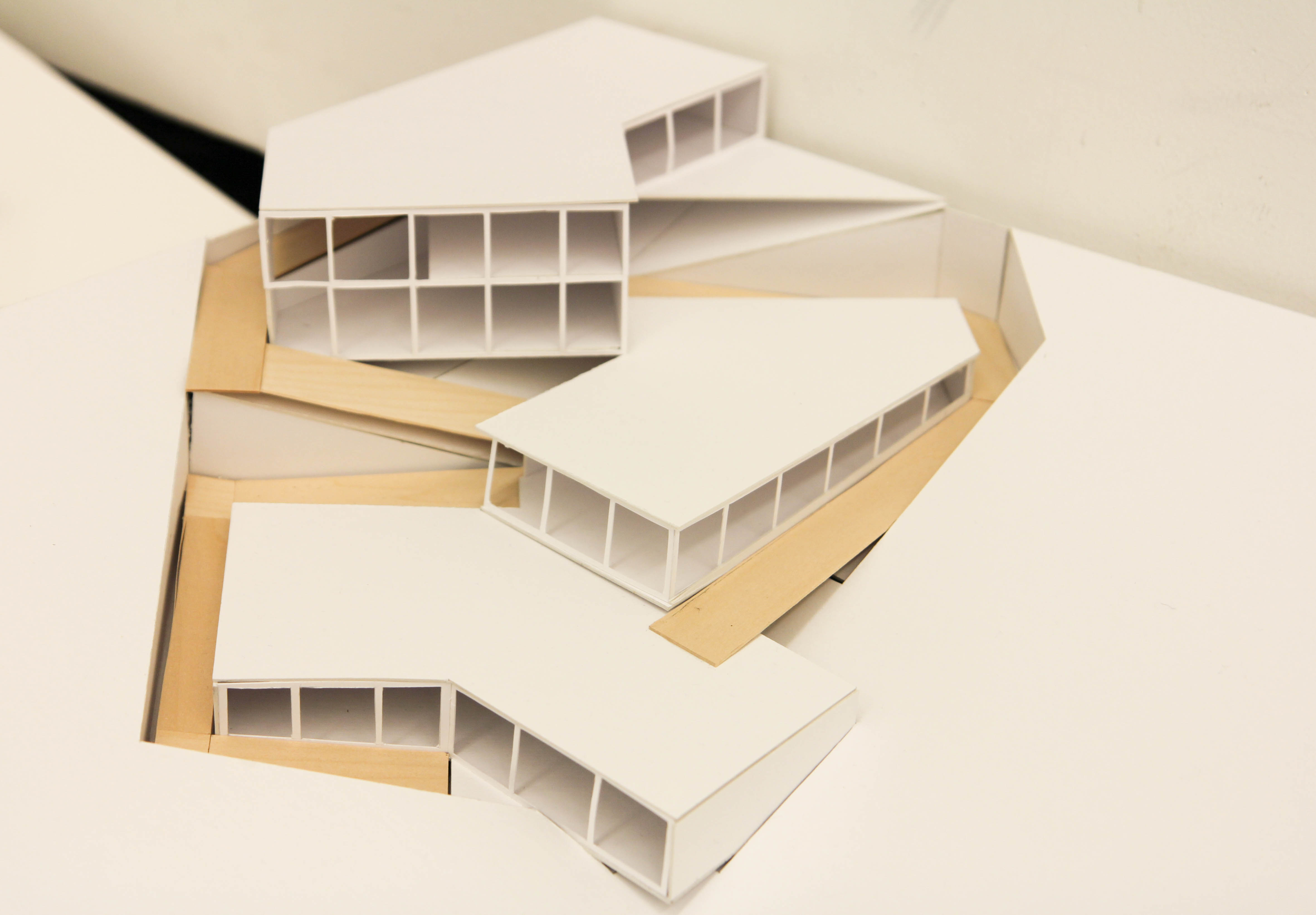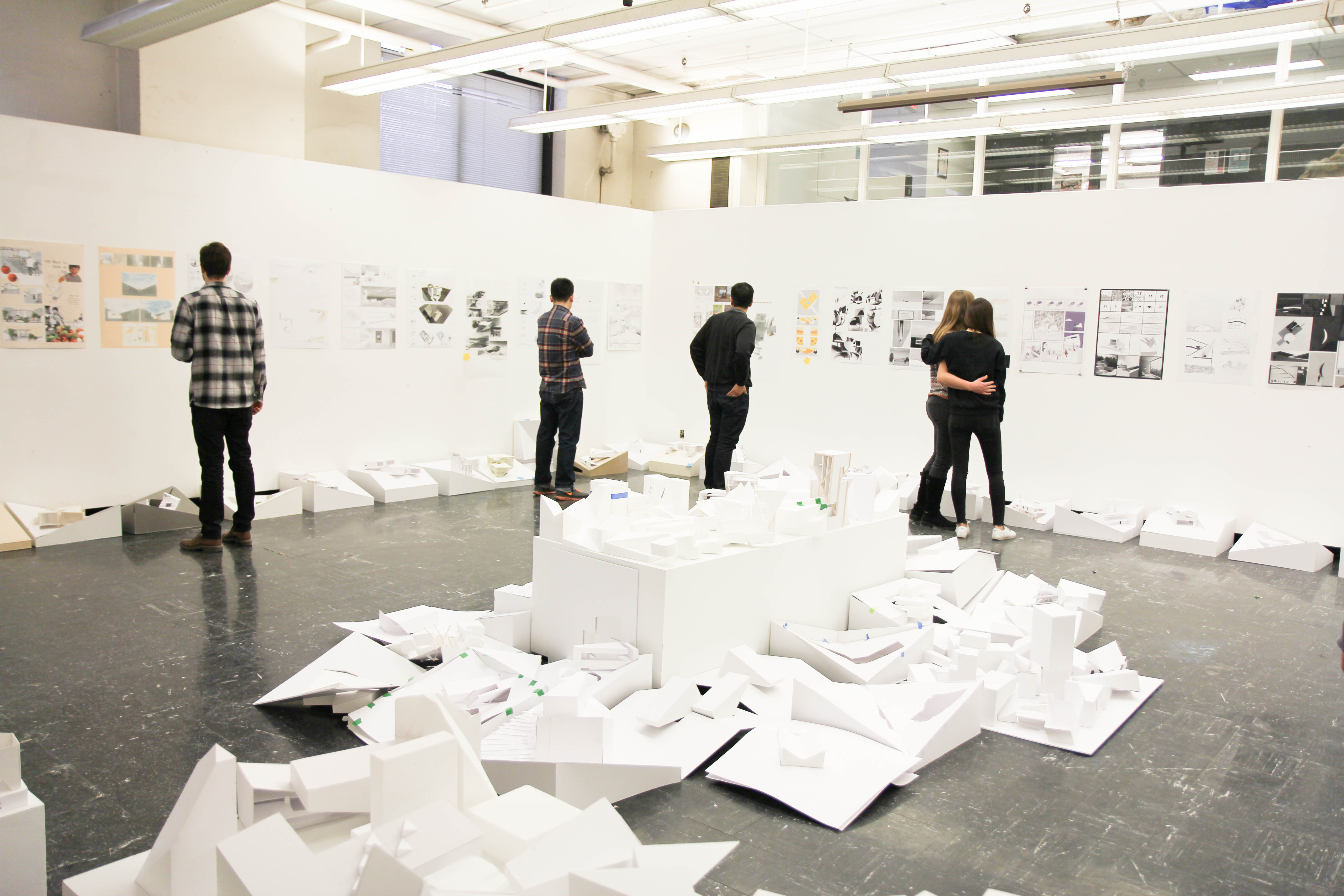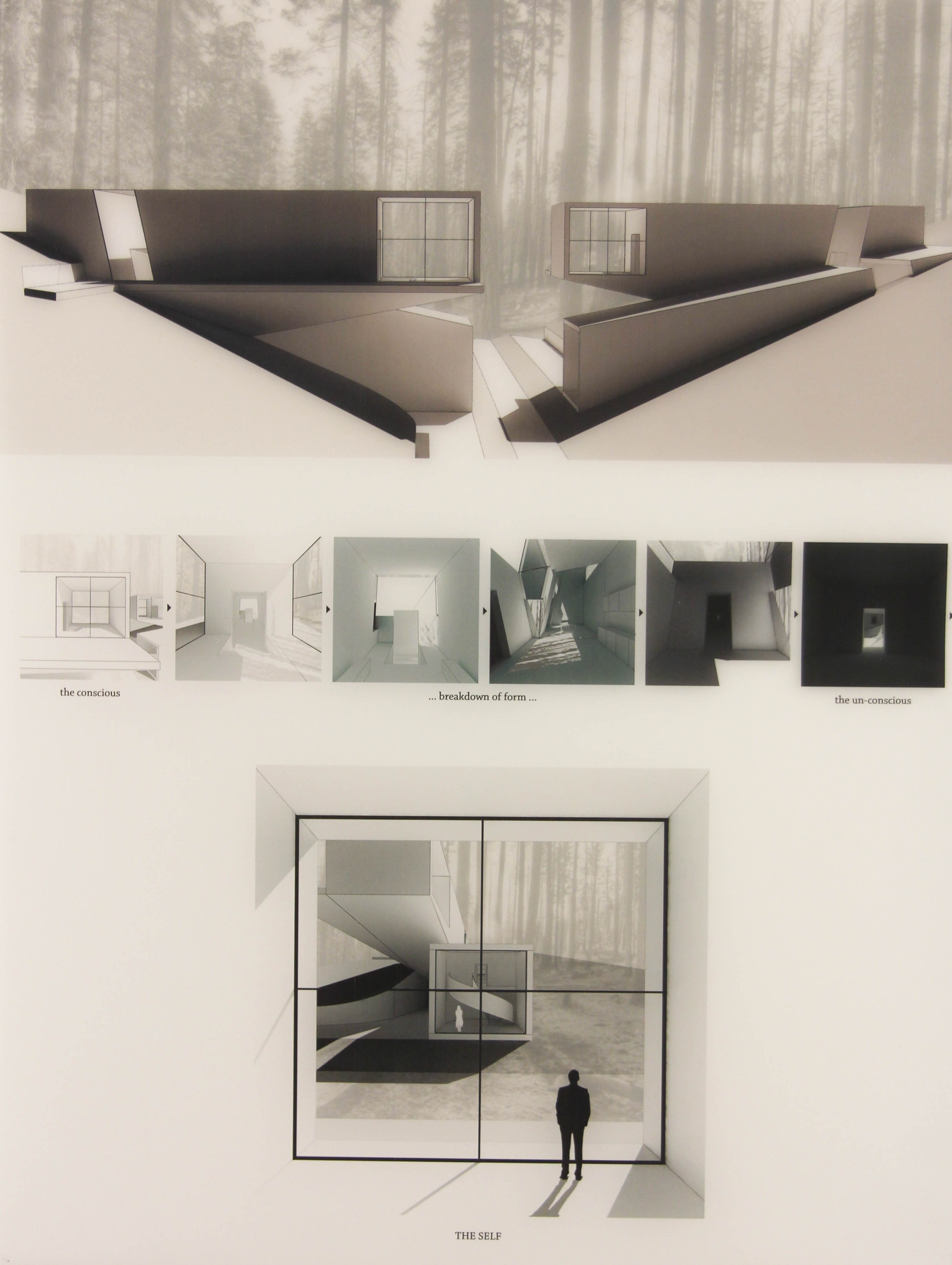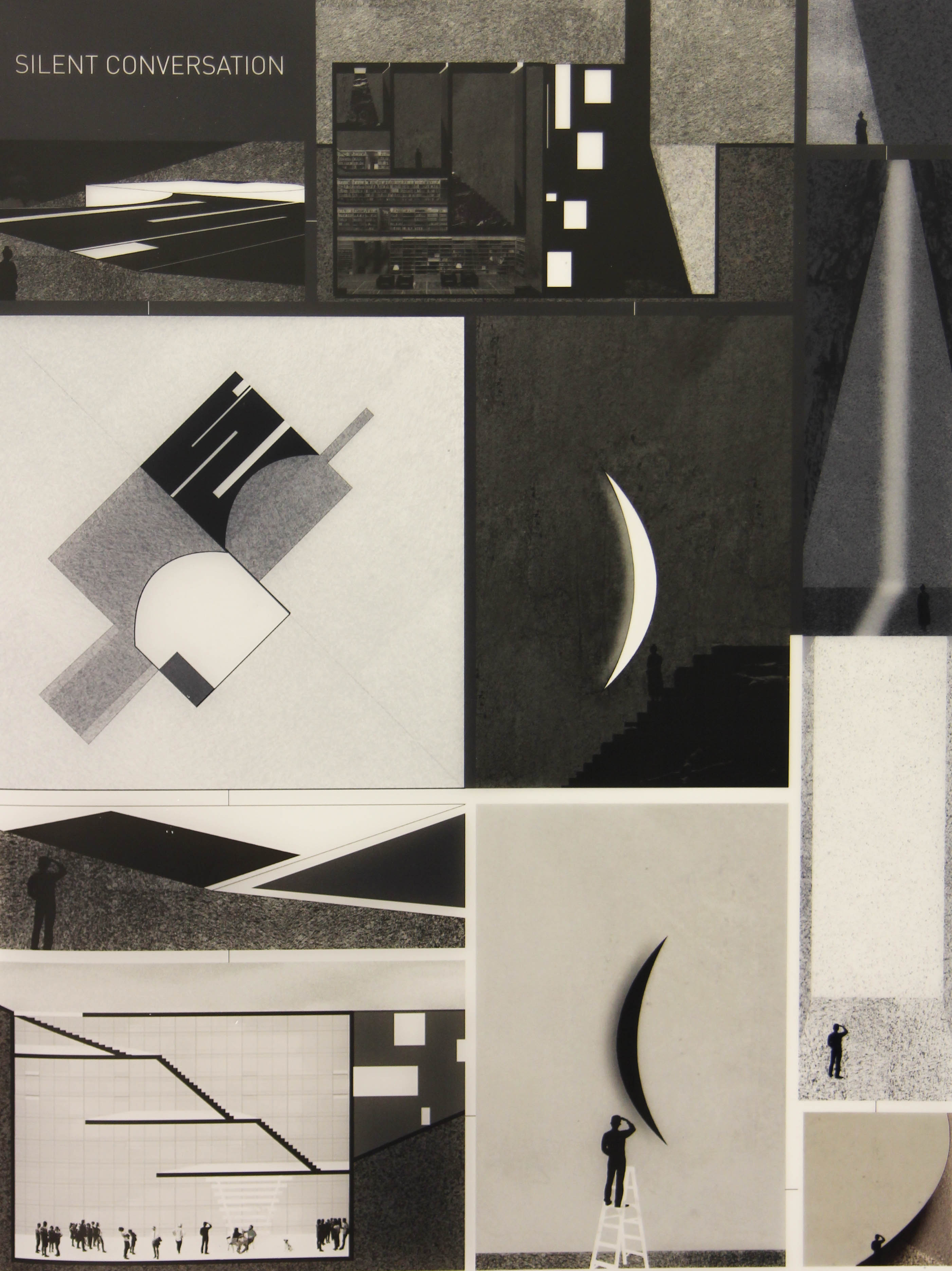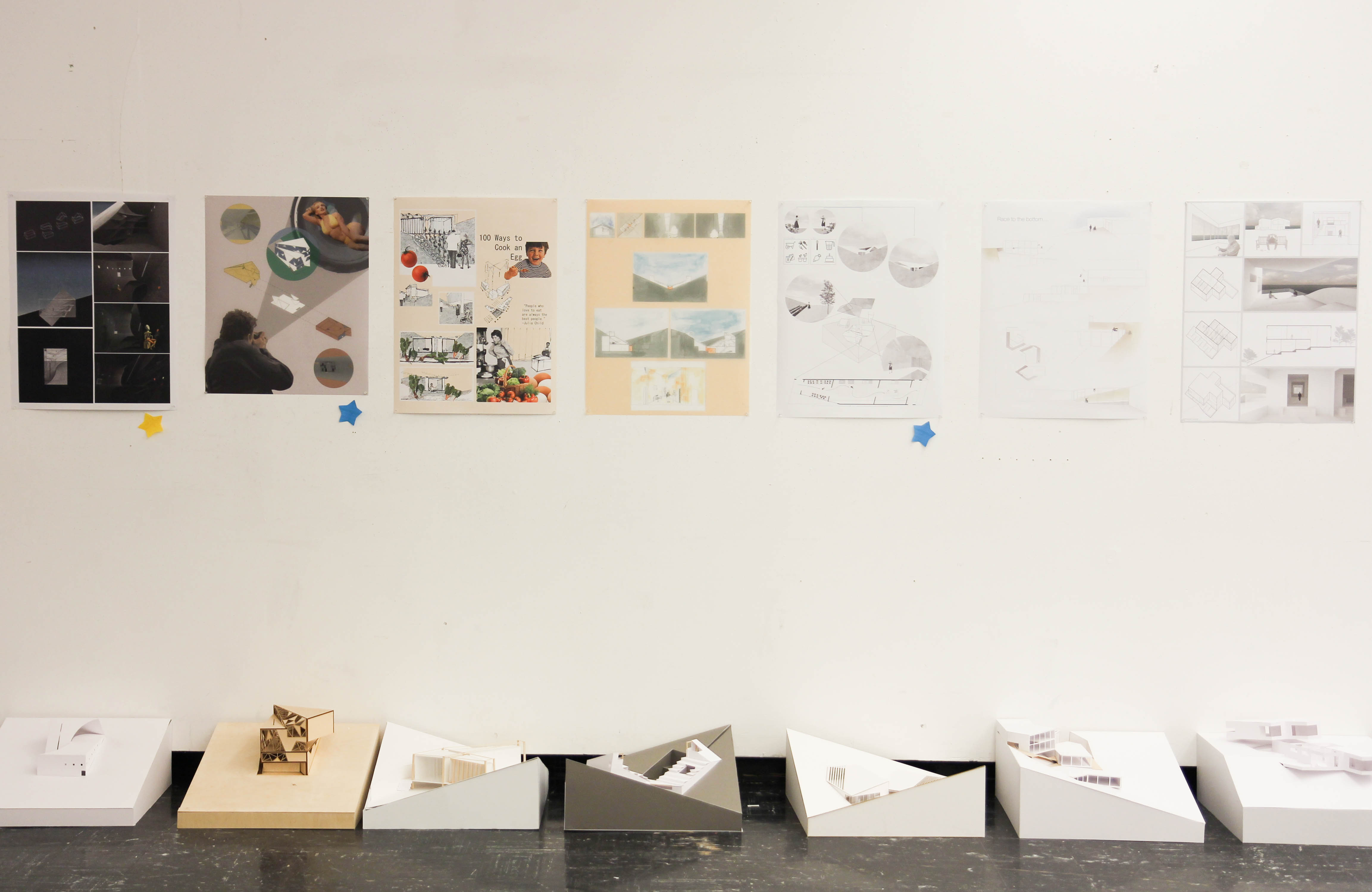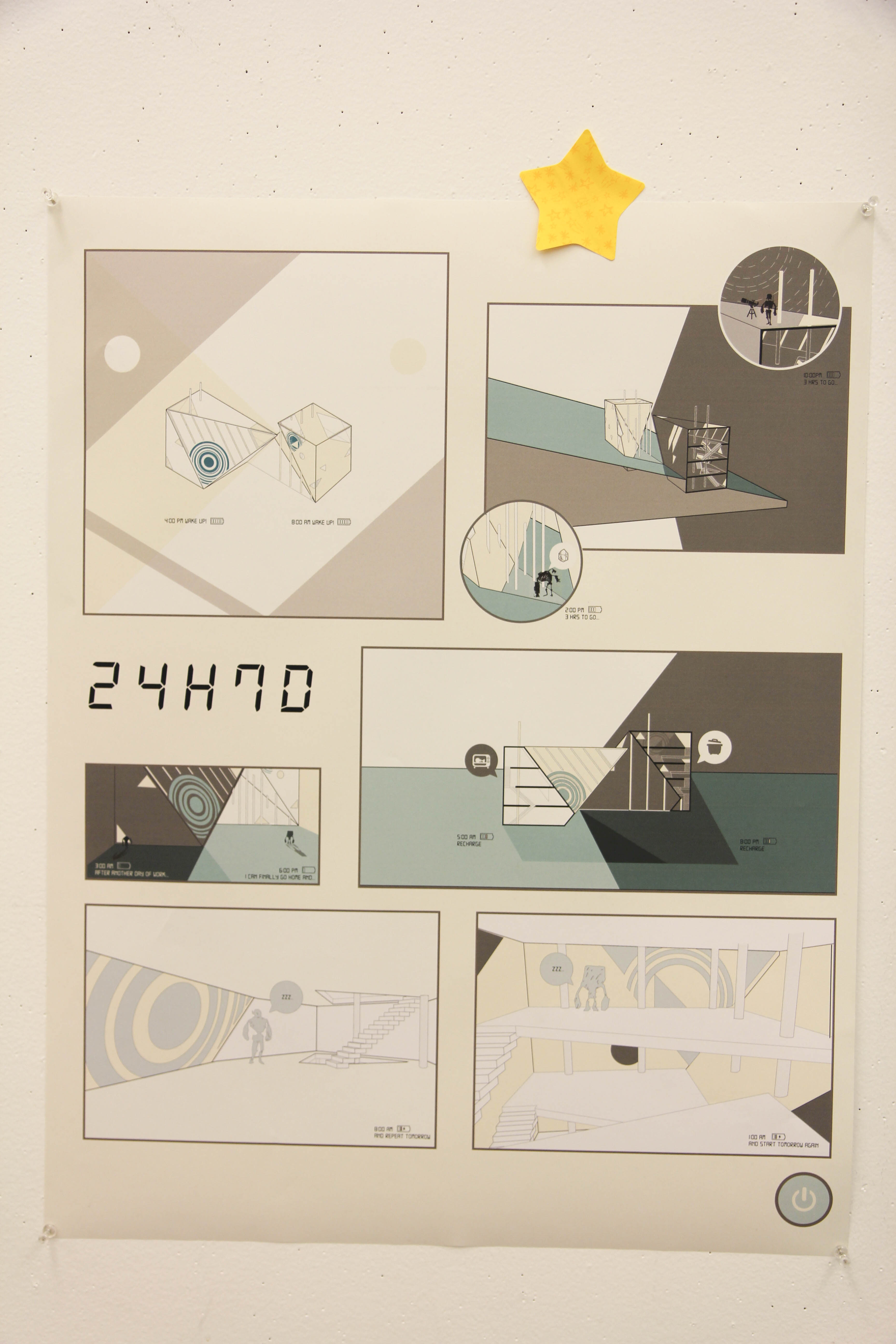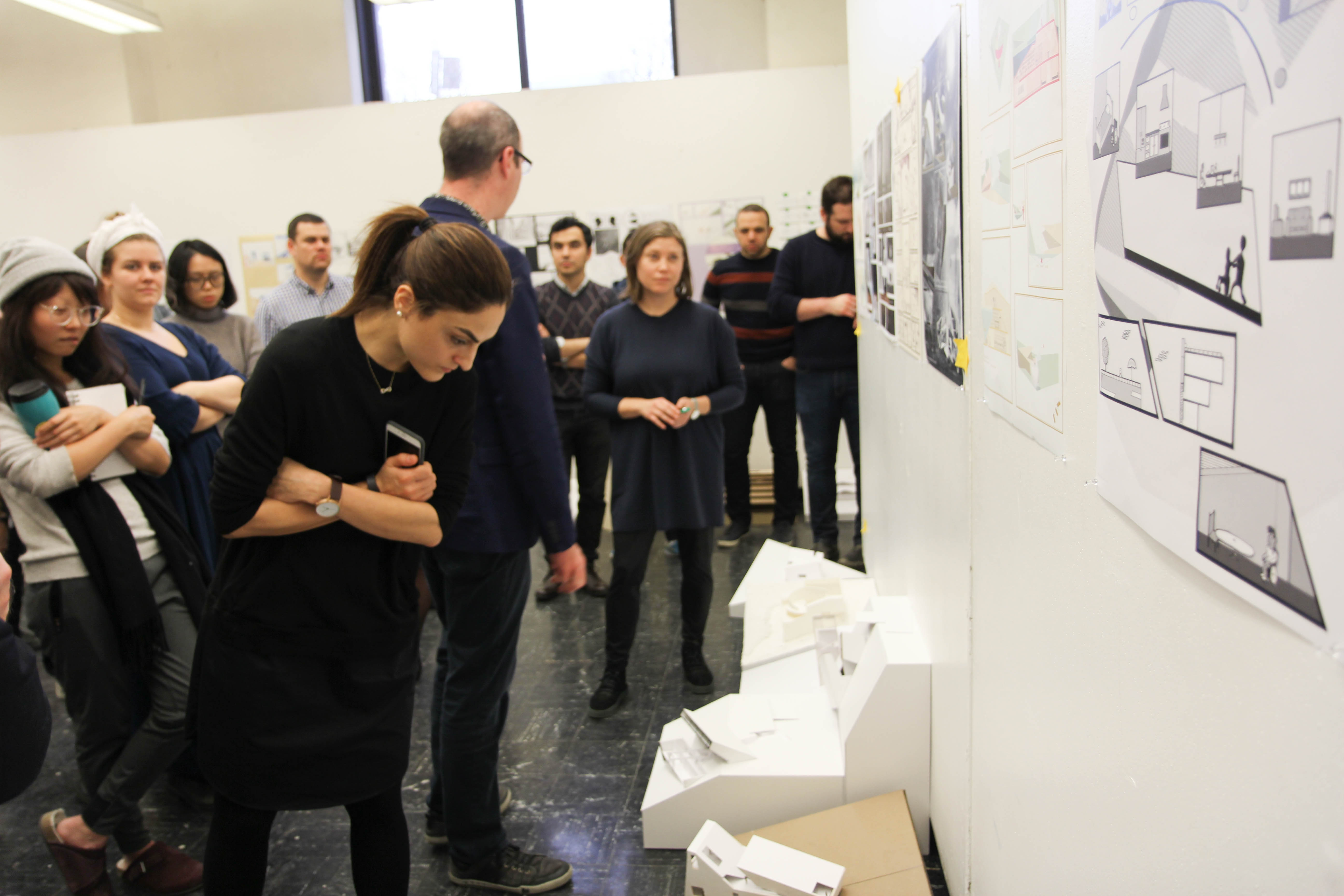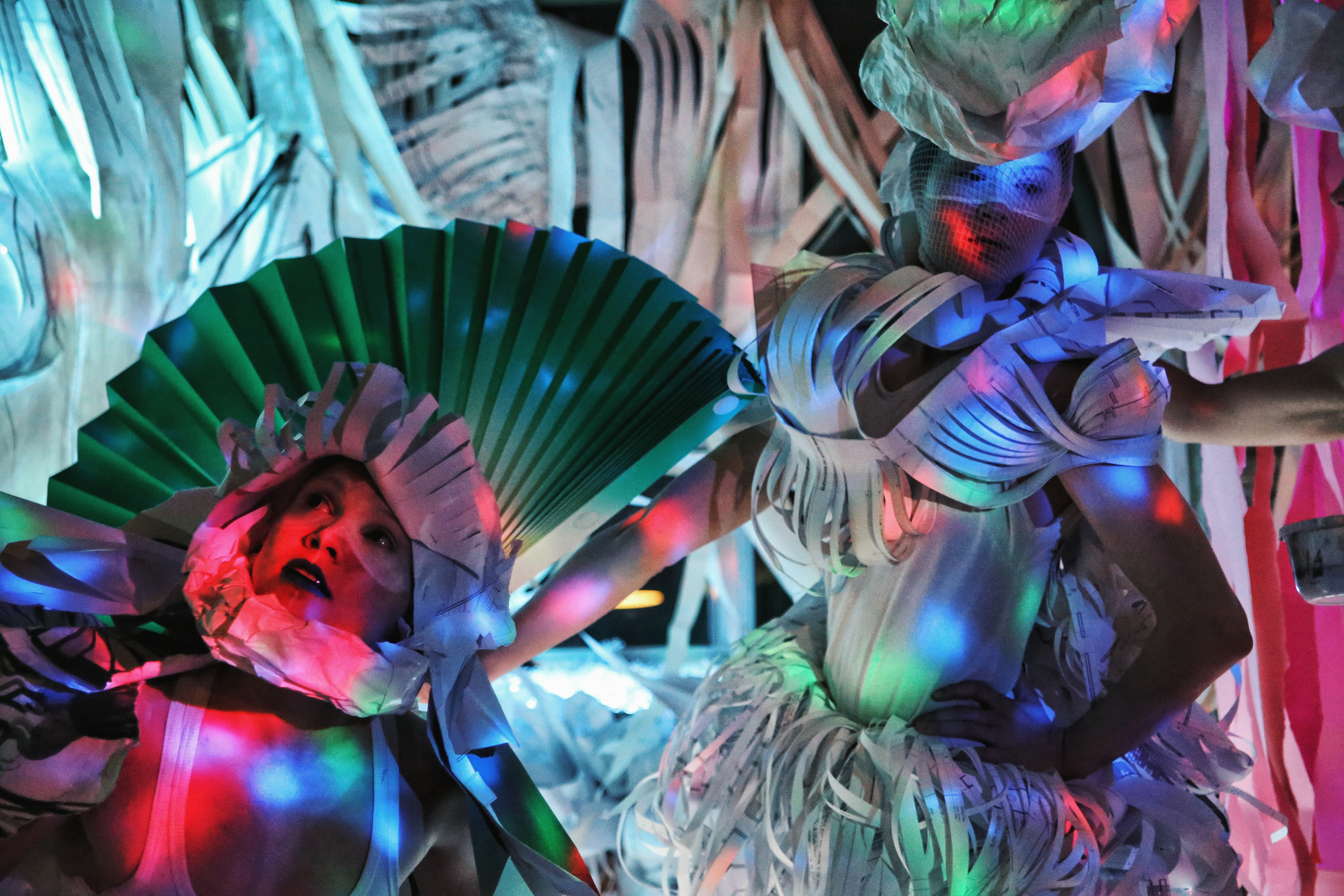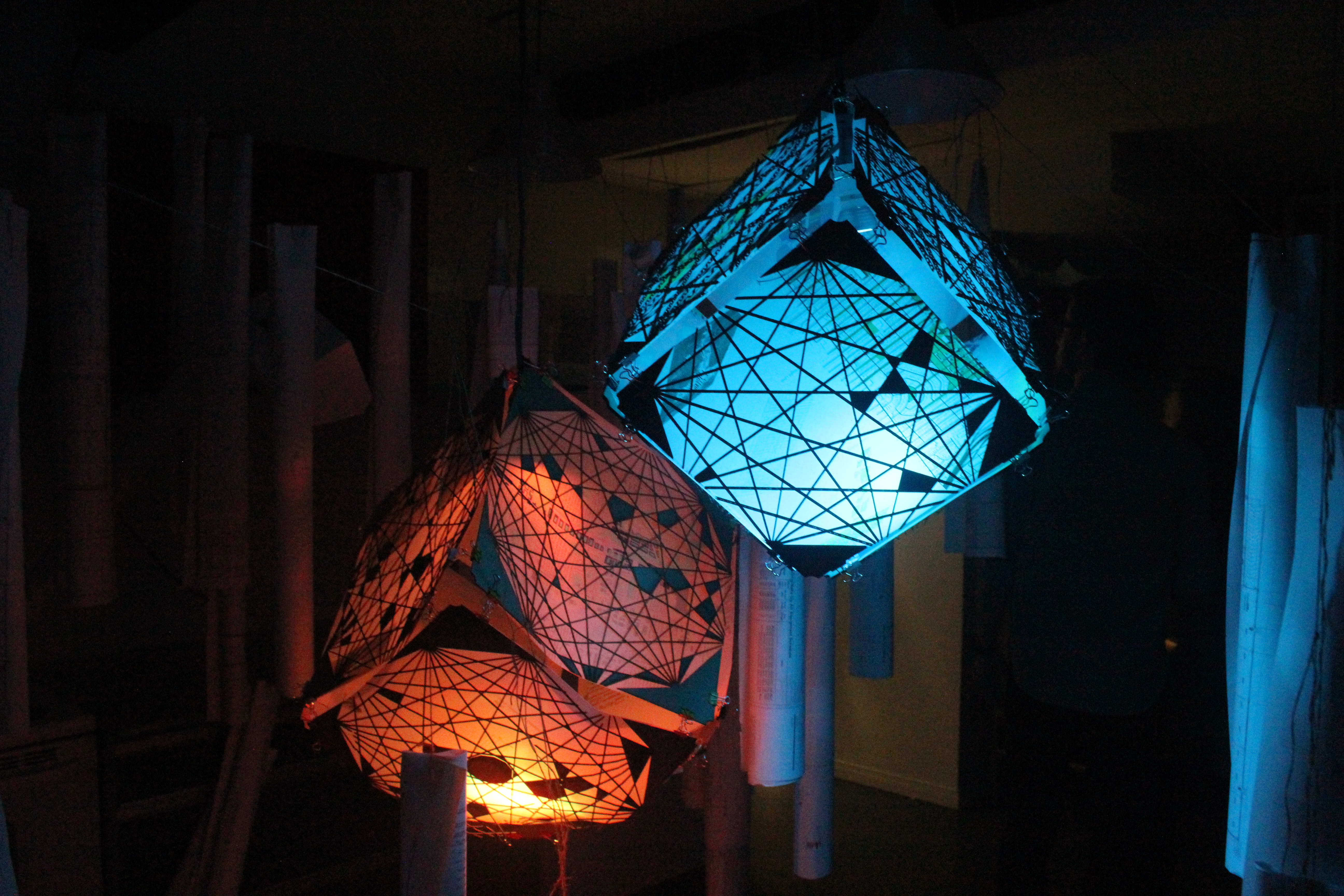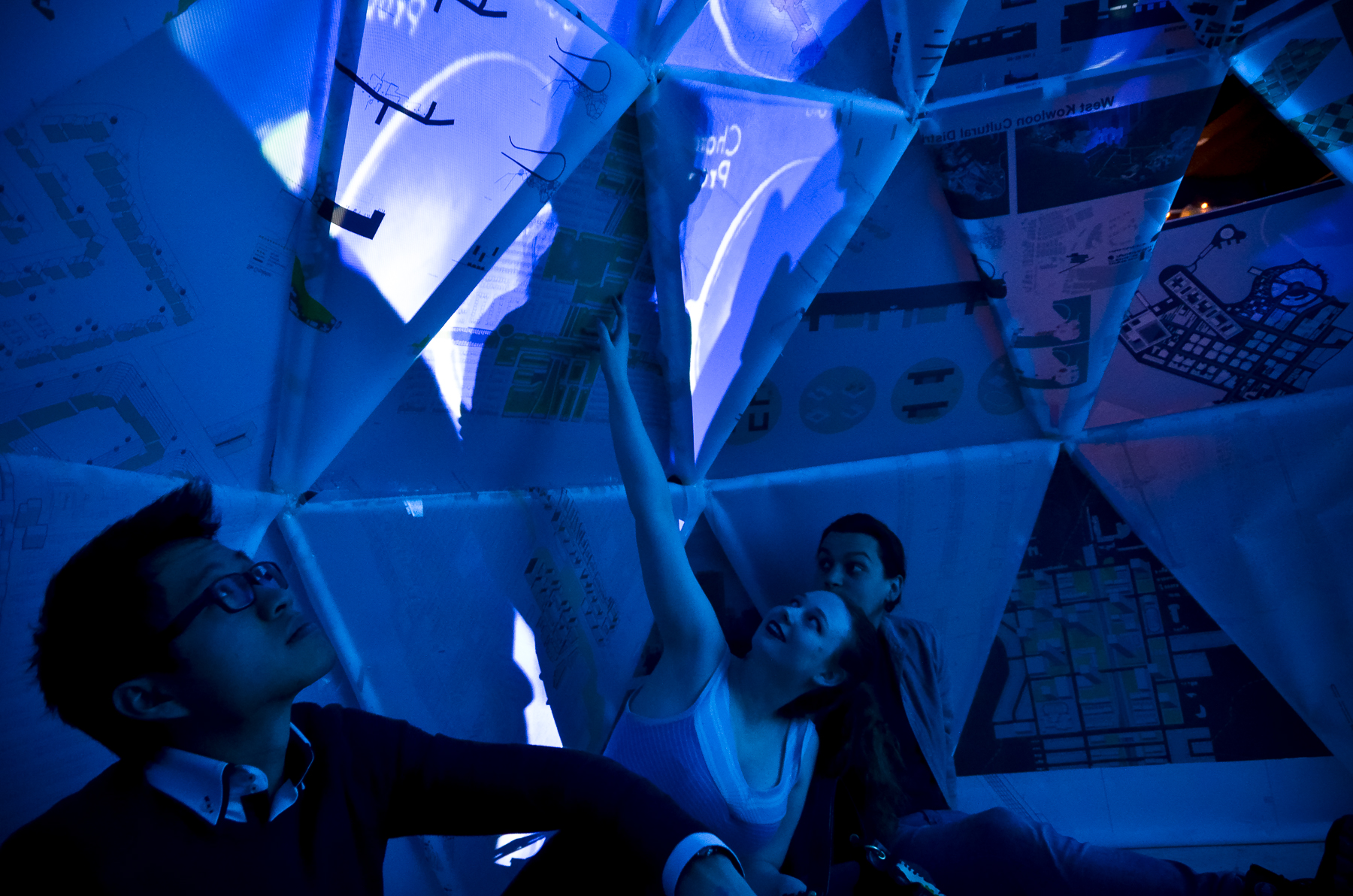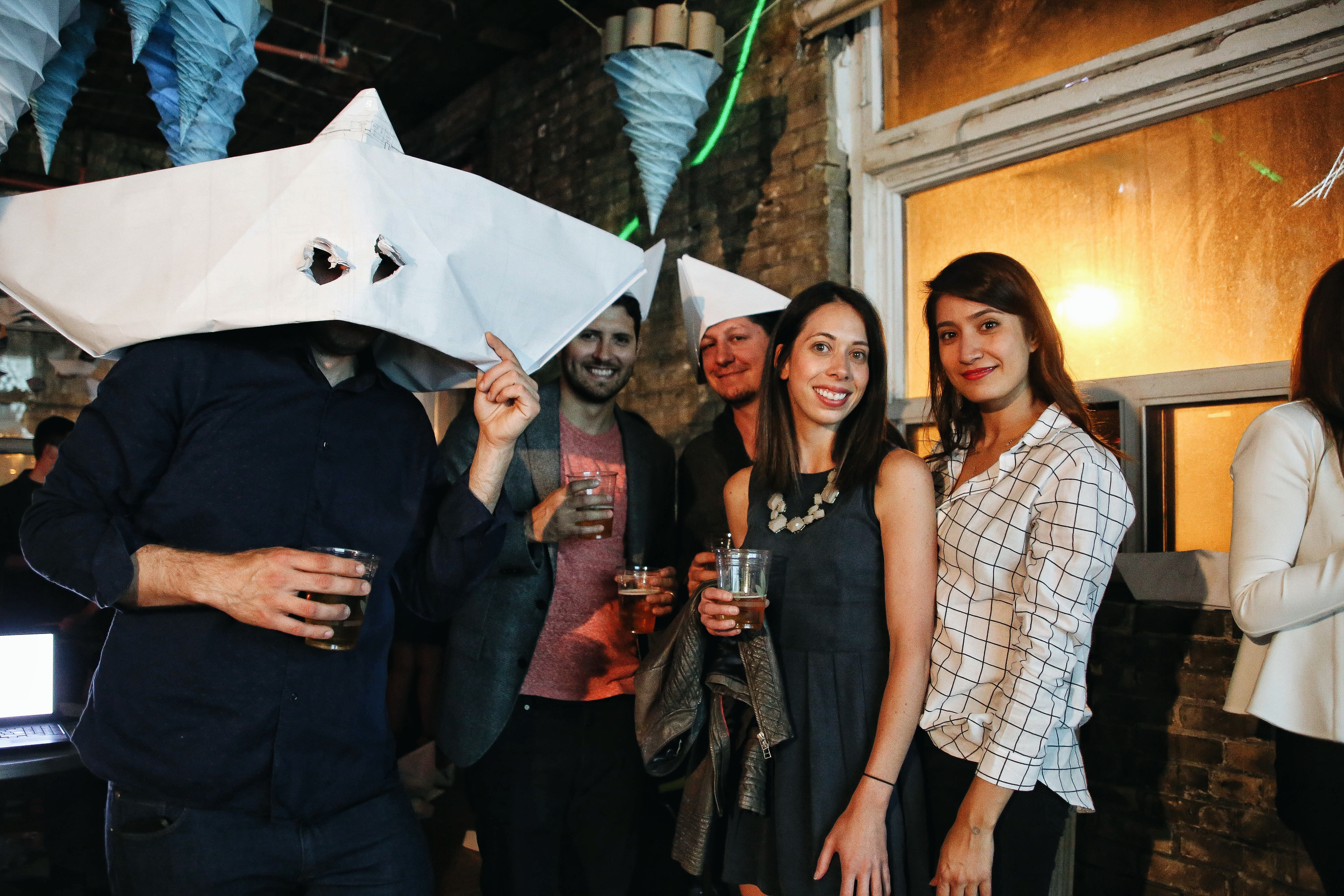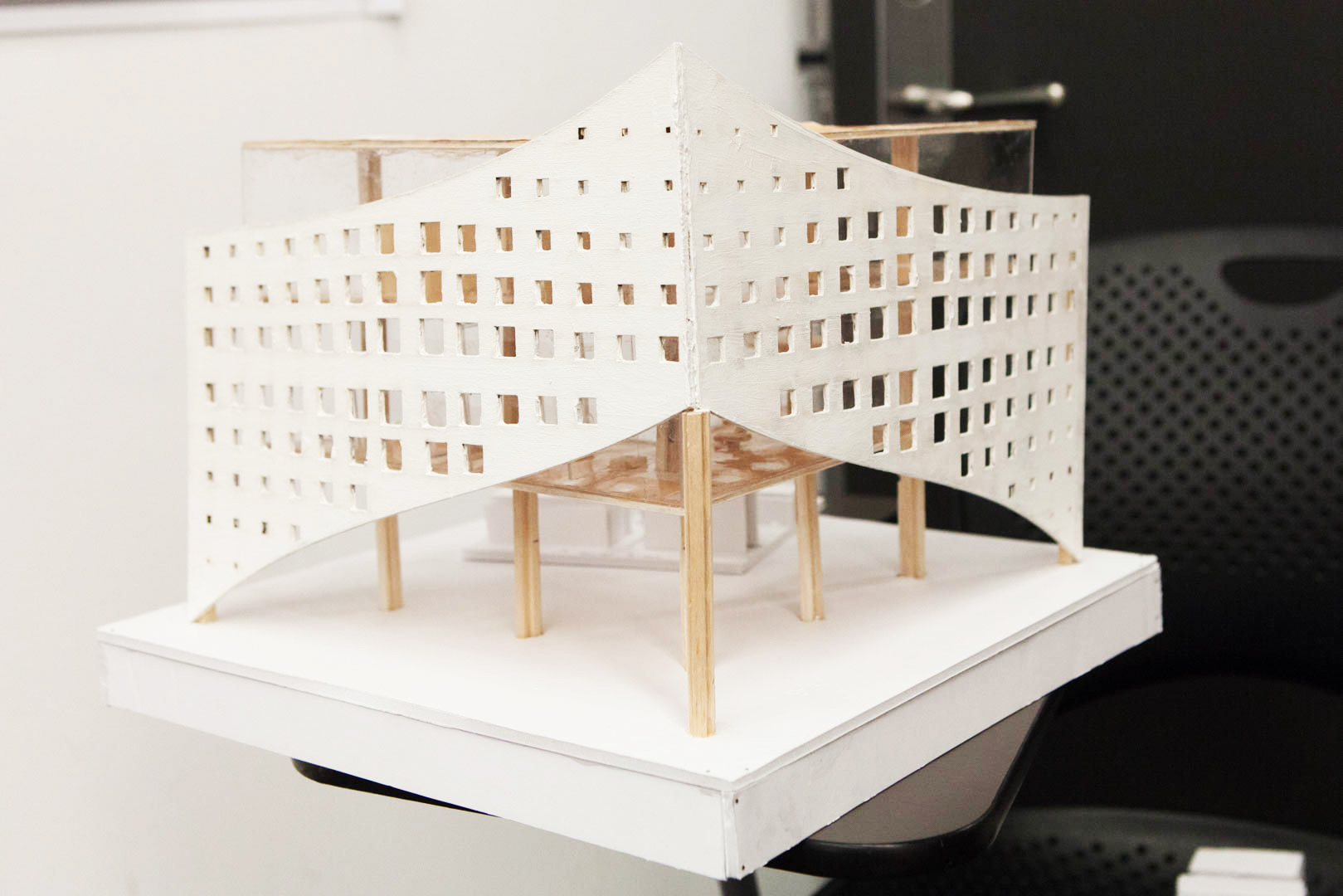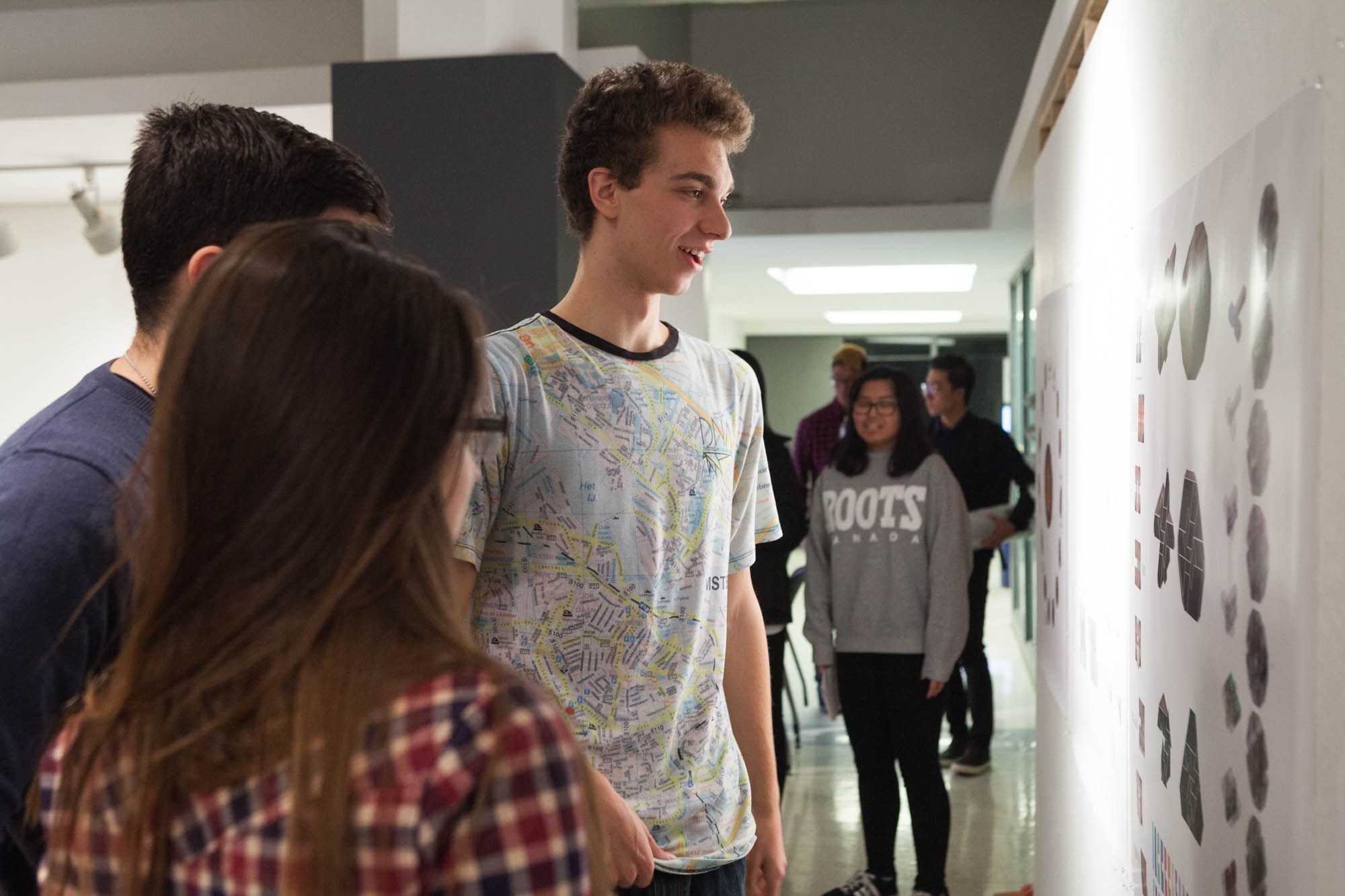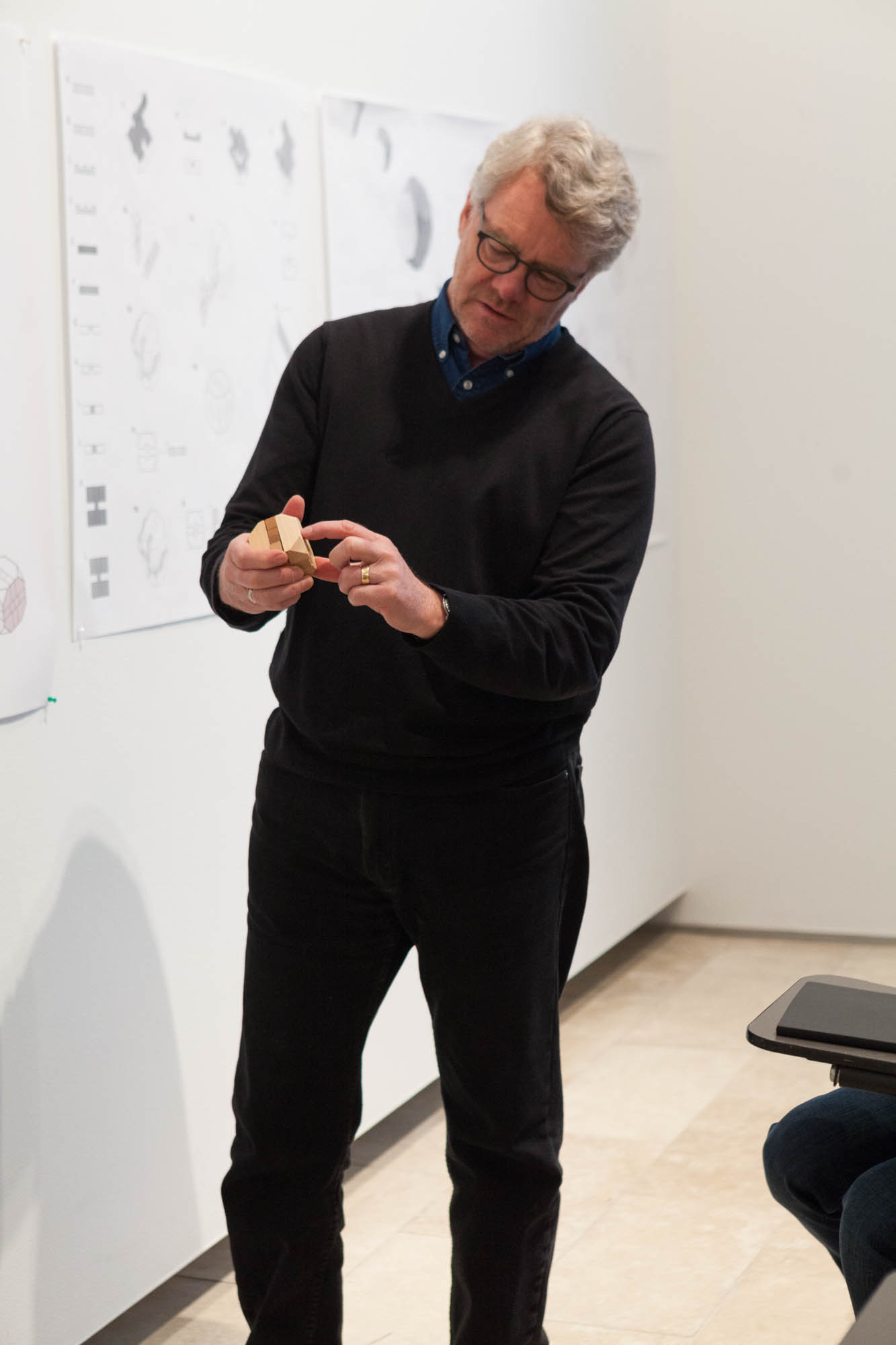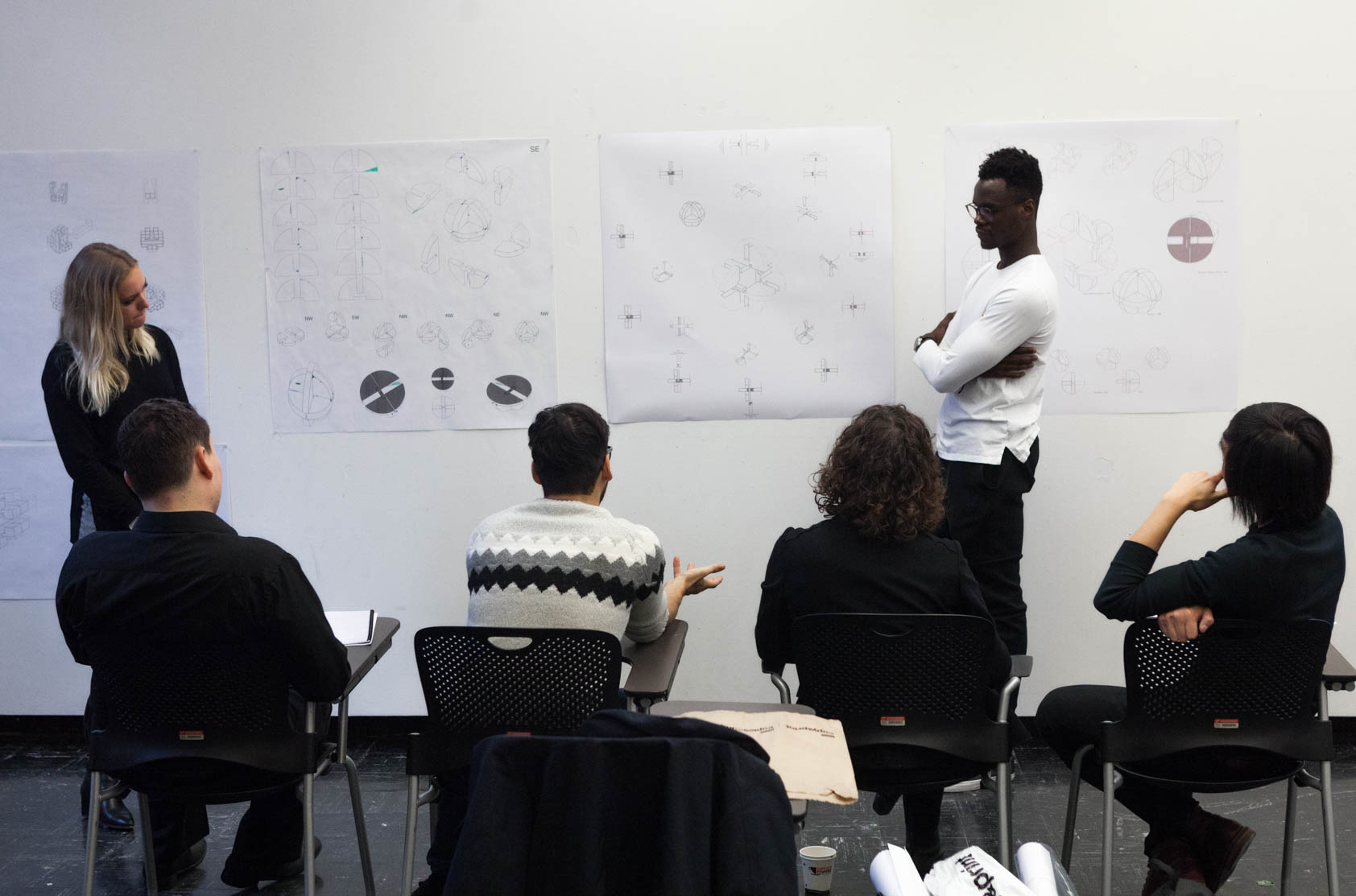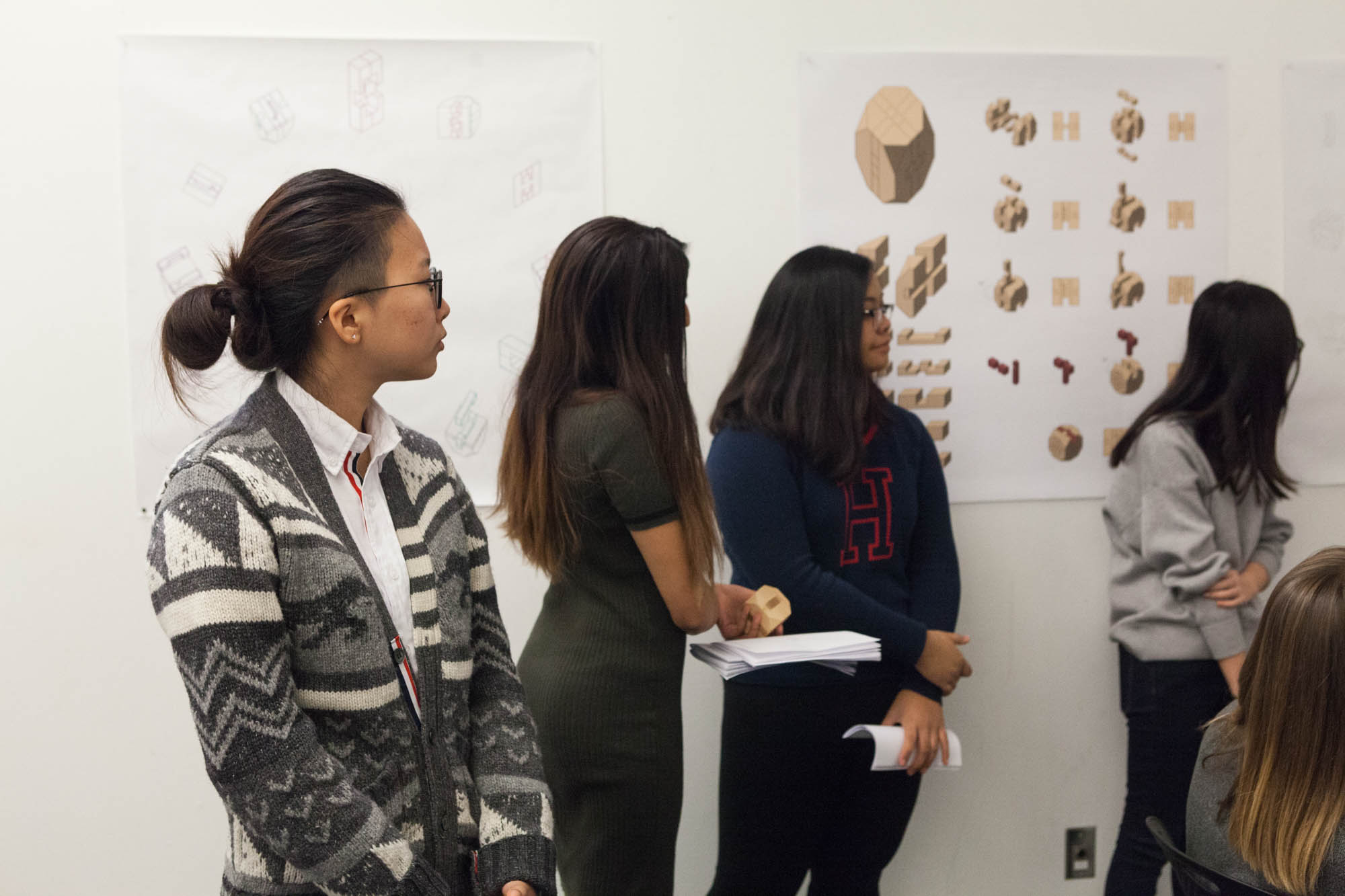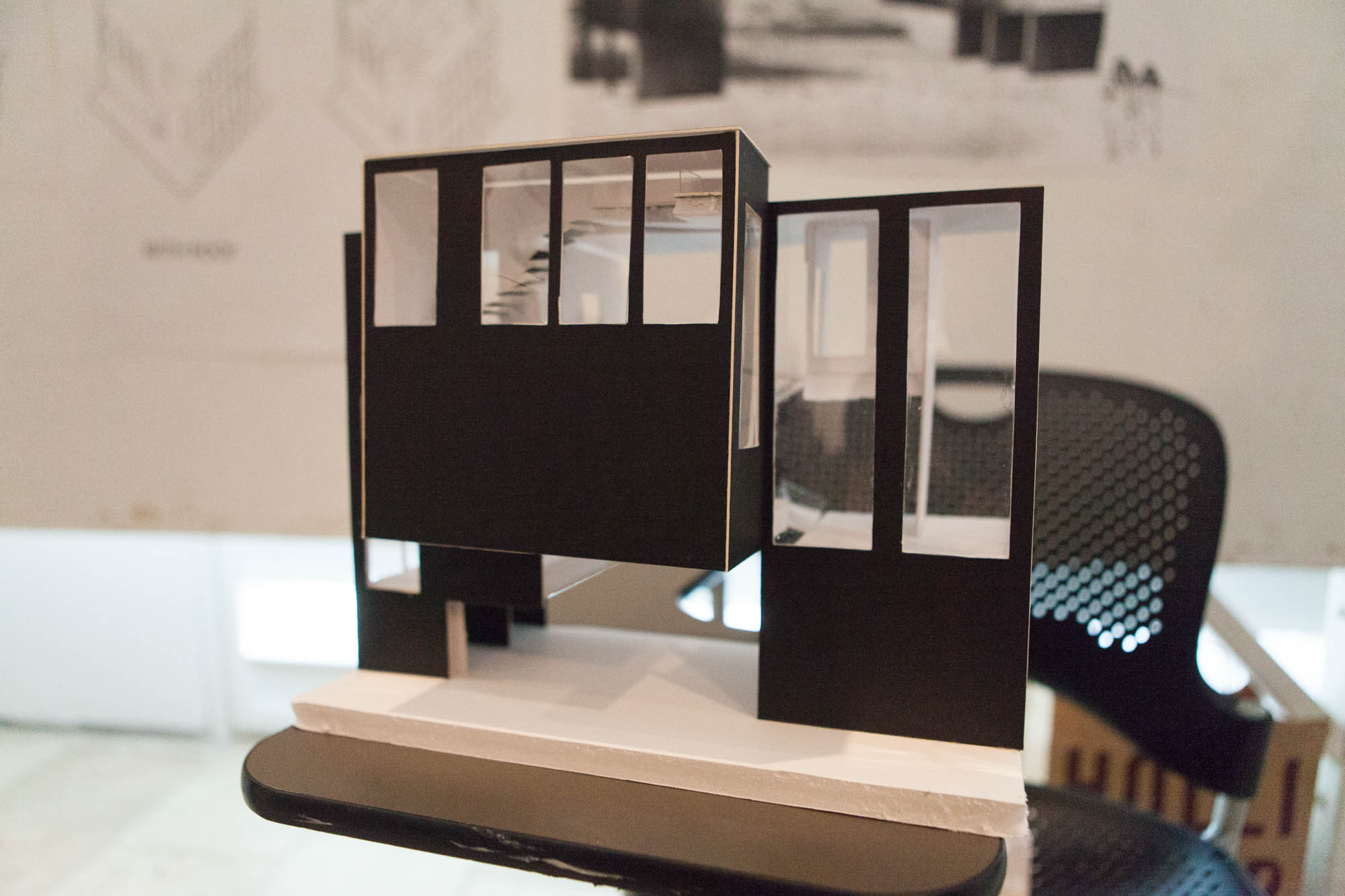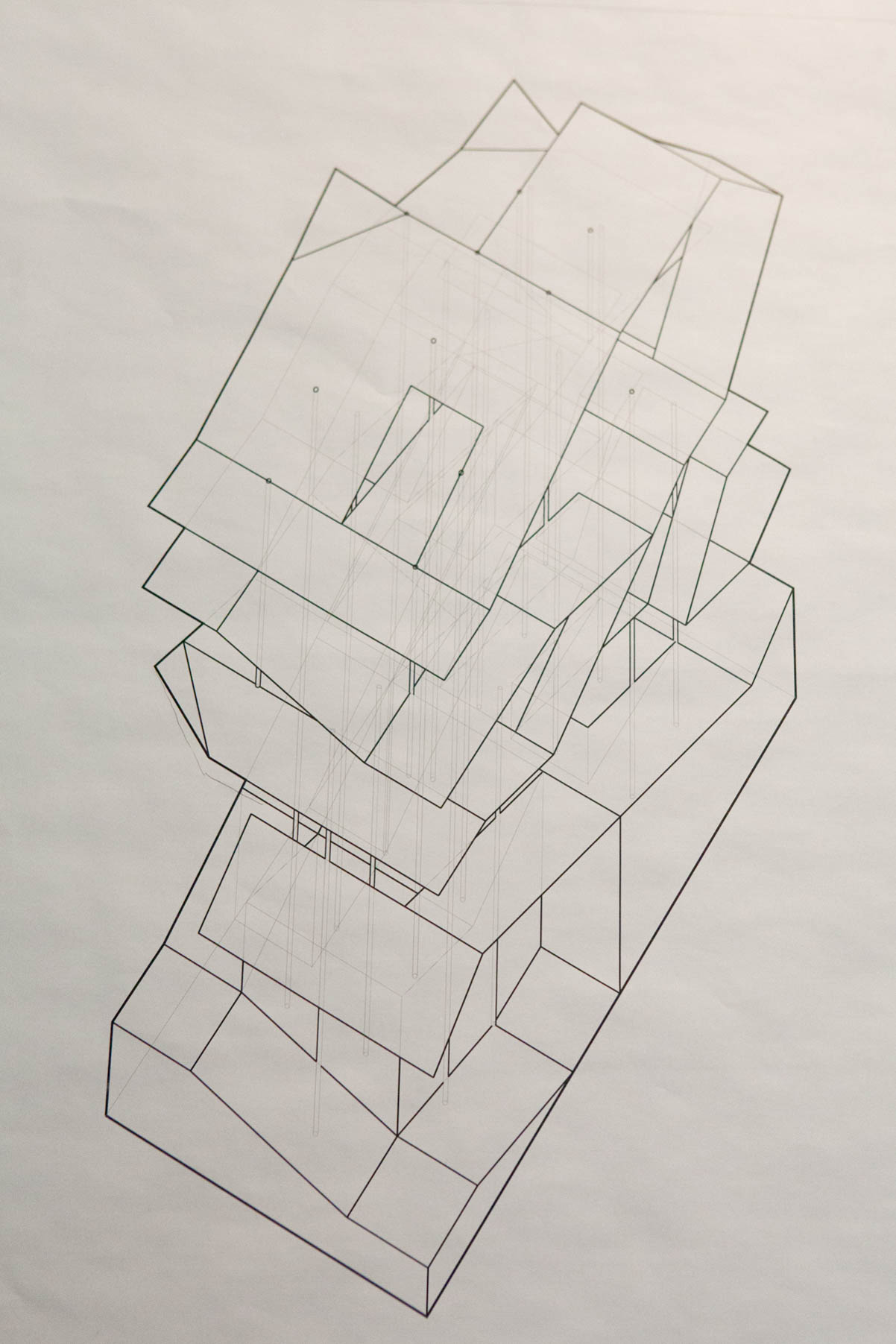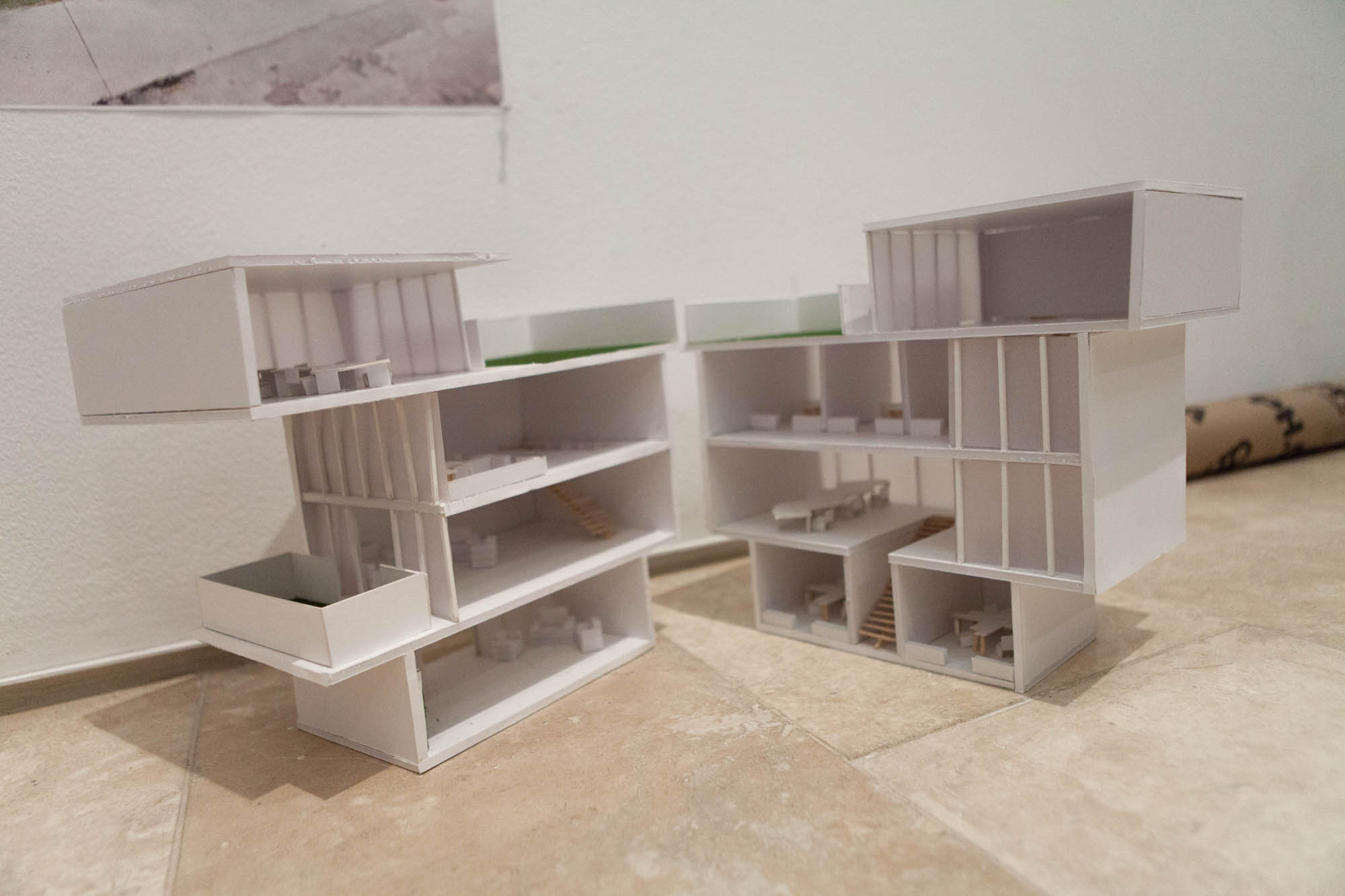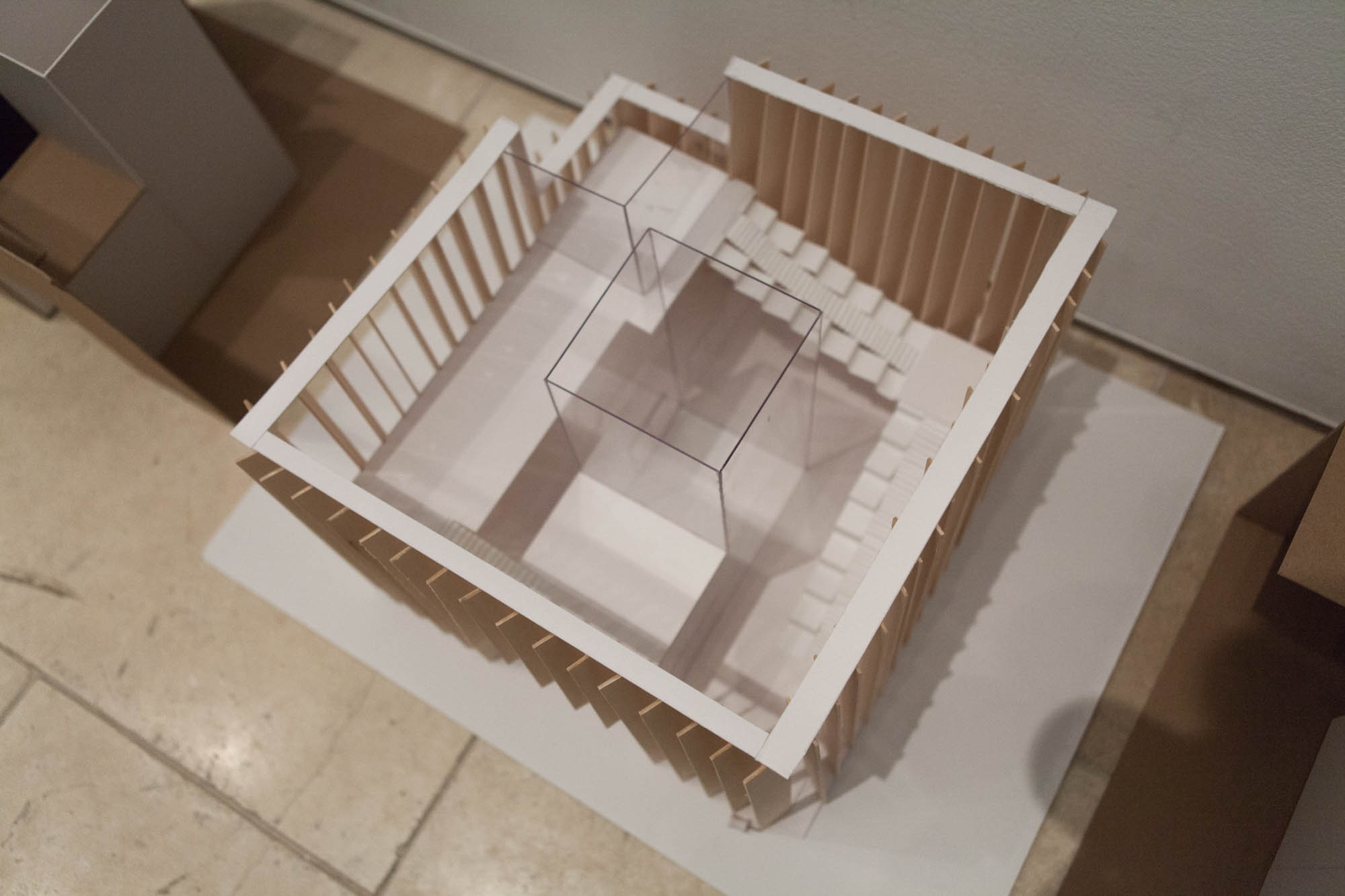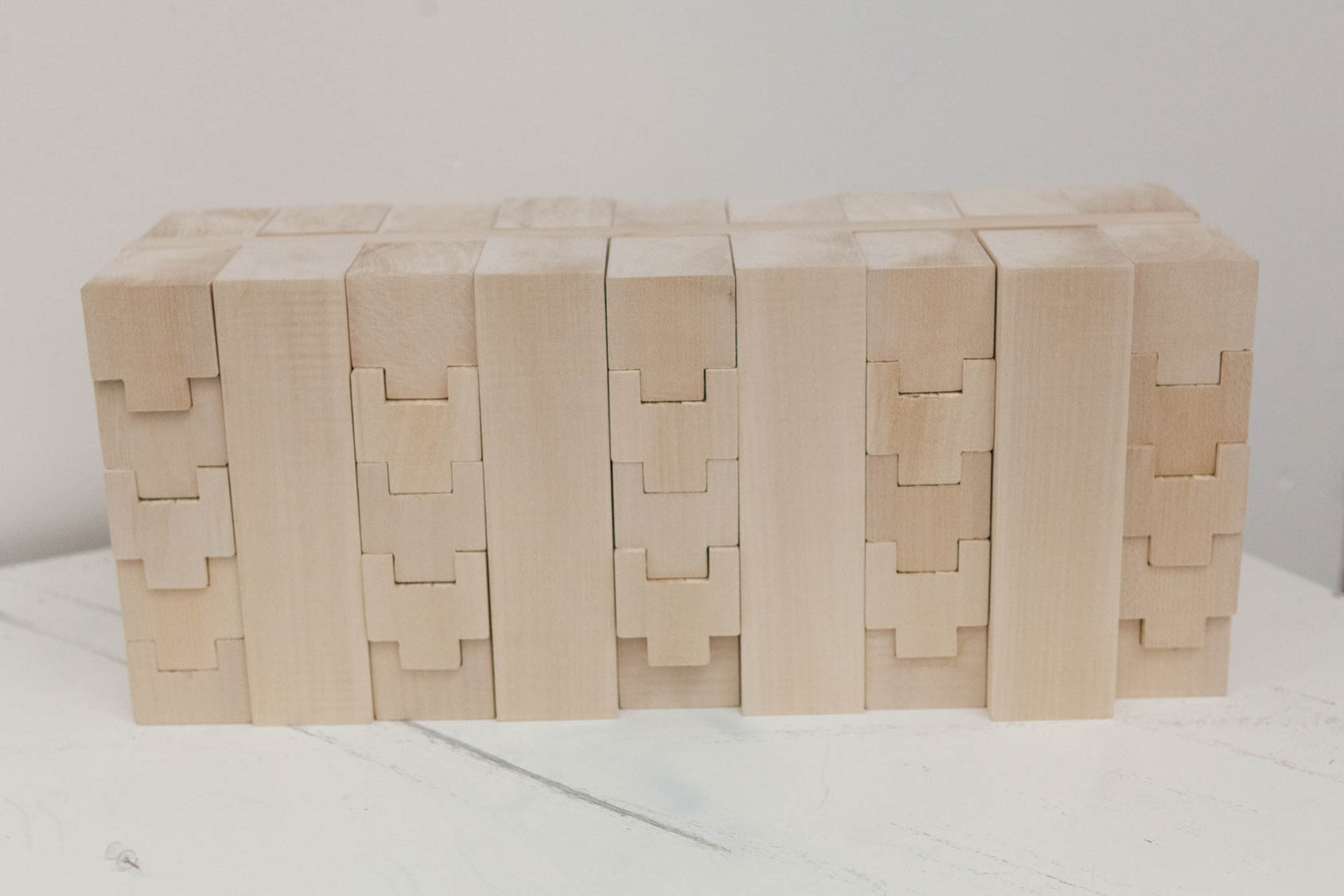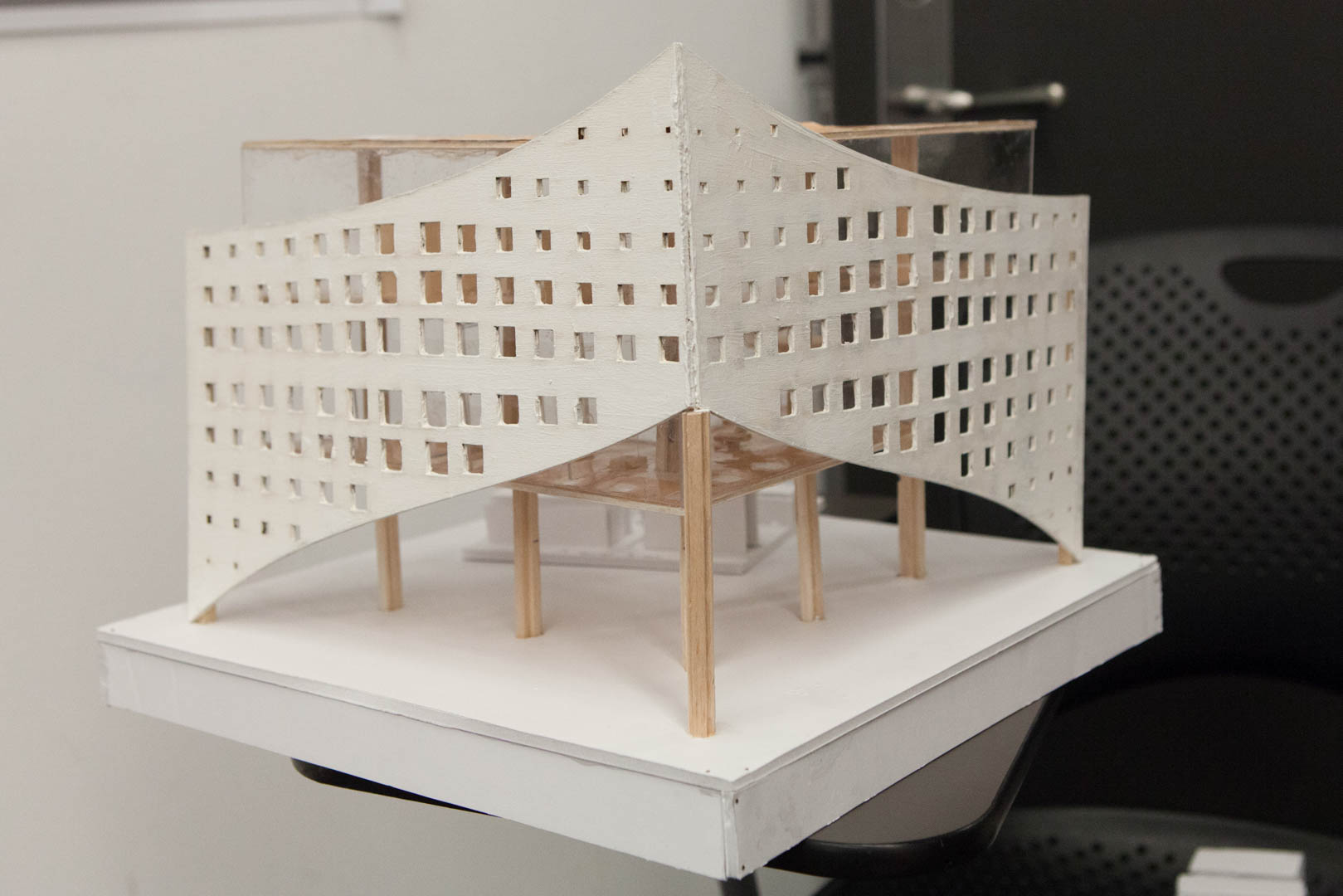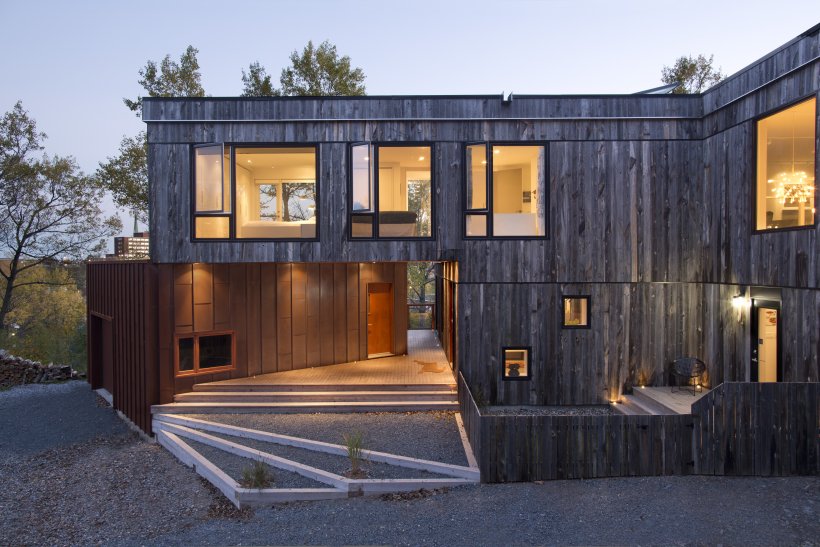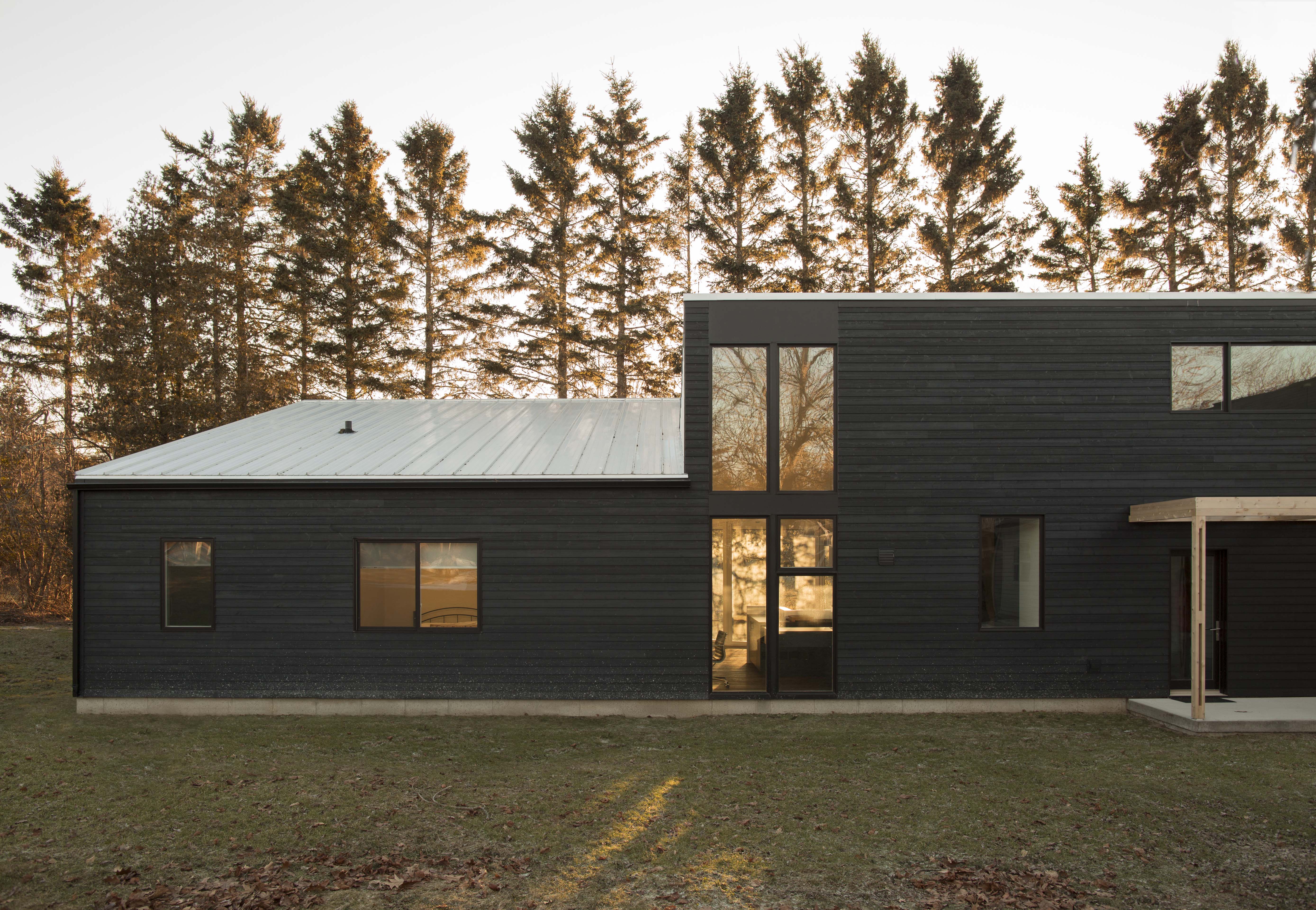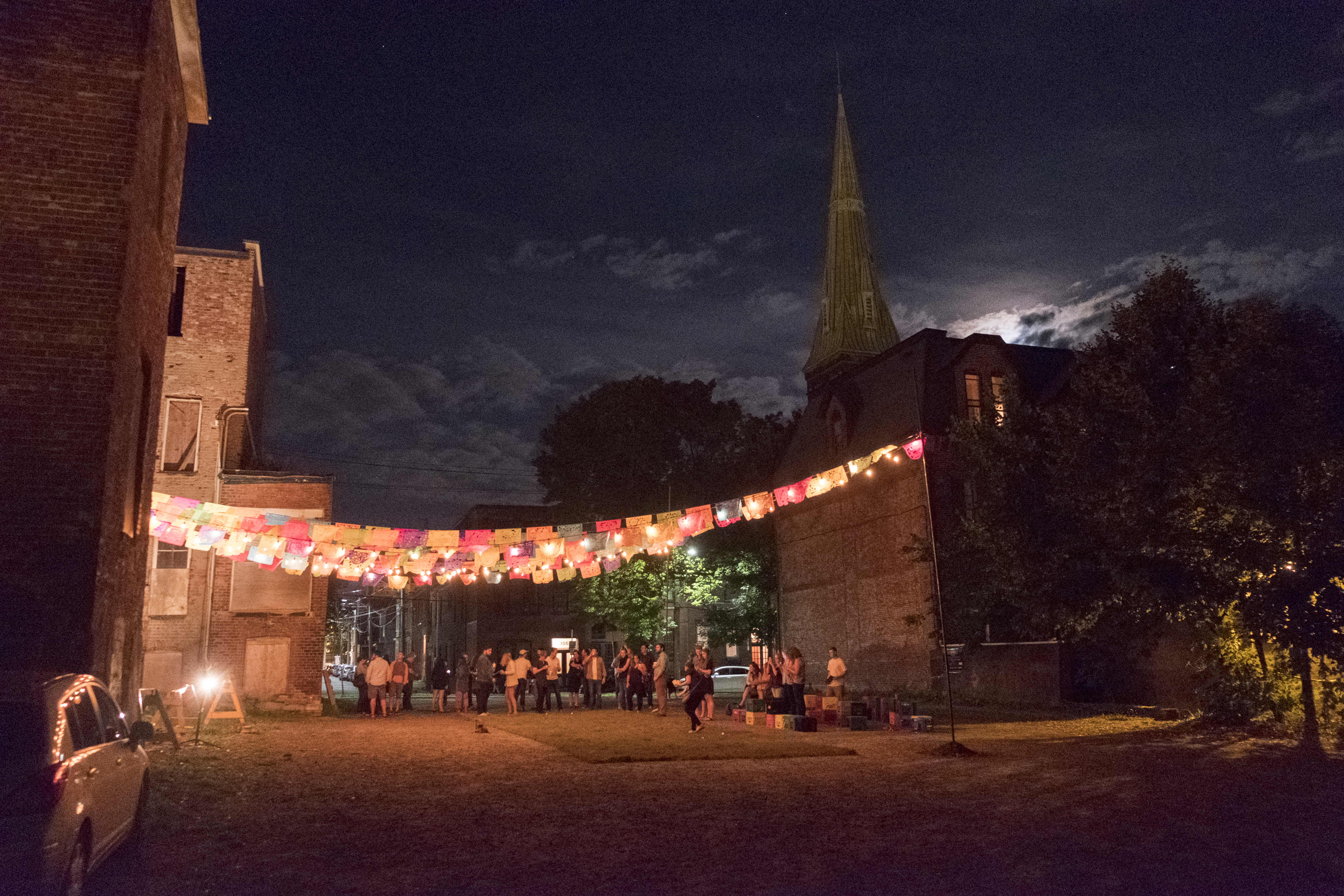09.02.17 - The pavilion that robots built (with help from Nicholas Hoban and other ETH Zurich masters students)
A group of masters students from ETH Zurich — including Daniels Faculty Adjunct Lecturer and Digital Fabrication Coordinator Nicholas Hoban (MArch 2012) — have created the world’s first two-storey wooden pavilion using robots. The group was based out of ETH Zurich's Gramazio Kohler Research lab. Hoban recently completed his MAS in Architecture and Digital Fabrication at ETH Zurich during a leave from the Daniels Faculty. A detailed description of the project can be viewed online at Dezeen.
"The goal was to develop adaptive robotic processes which were able to handle unknown material dimensions and surface quality, and therefore limit material waste resulting from using standardised pre-processed (engineered) timber products," Philipp Eversmann, Head of Education for the NCCR Digital Fabrication at ETH Zurich, told Dezeen.
The pavilion was designed for the Zurich Design Biennale, which will feature the project at its festival in September 2017.
Hoban is a designer and fabricator based in Toronto. As the Coordinator of the Daniels Faculty’s Digital Fabrication Lab, he oversees faculty fabrication research projects and the operation of its digital fabrication facilities. He teaches digital fabrication methodologies and software to Daniels Faculty masters students.


